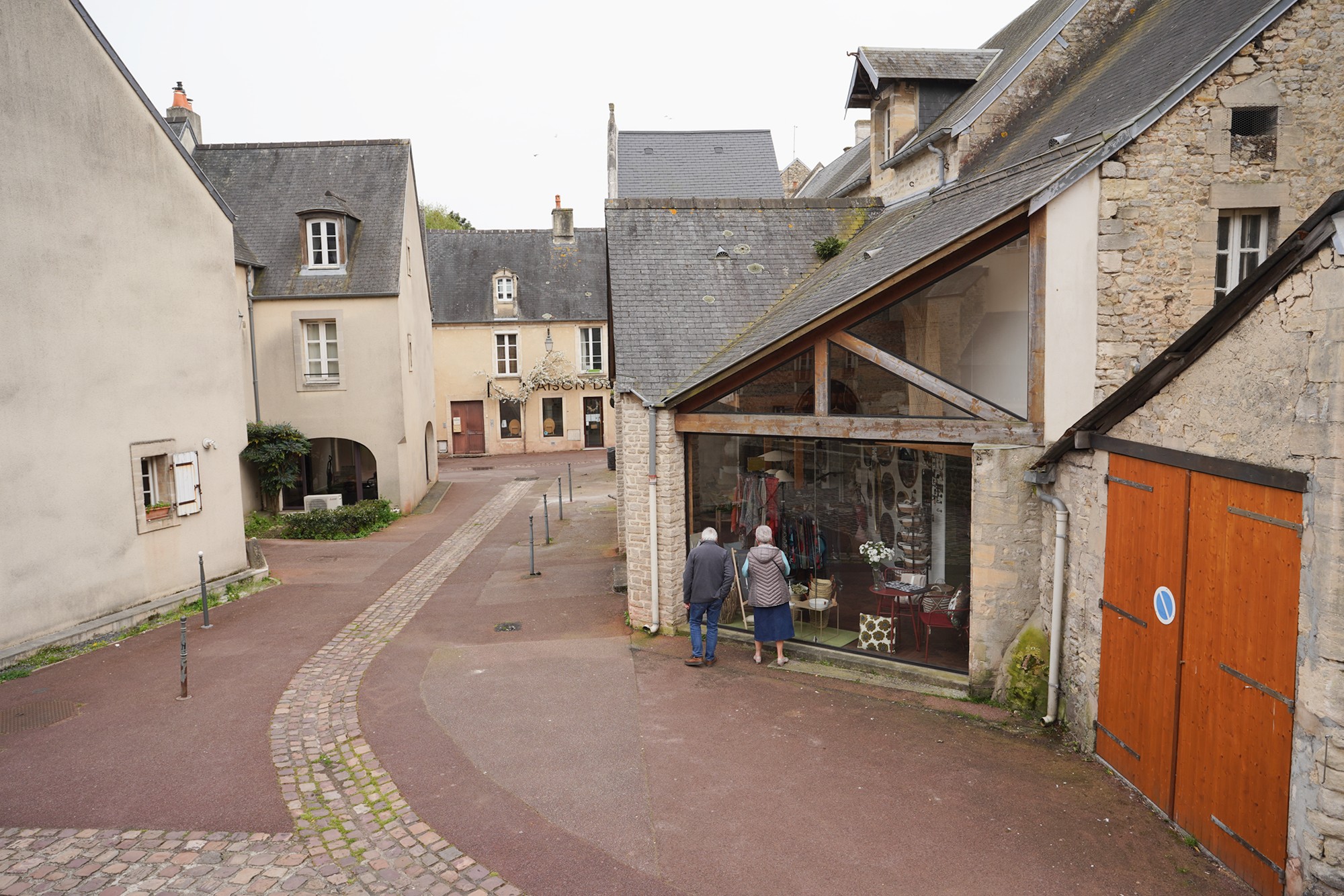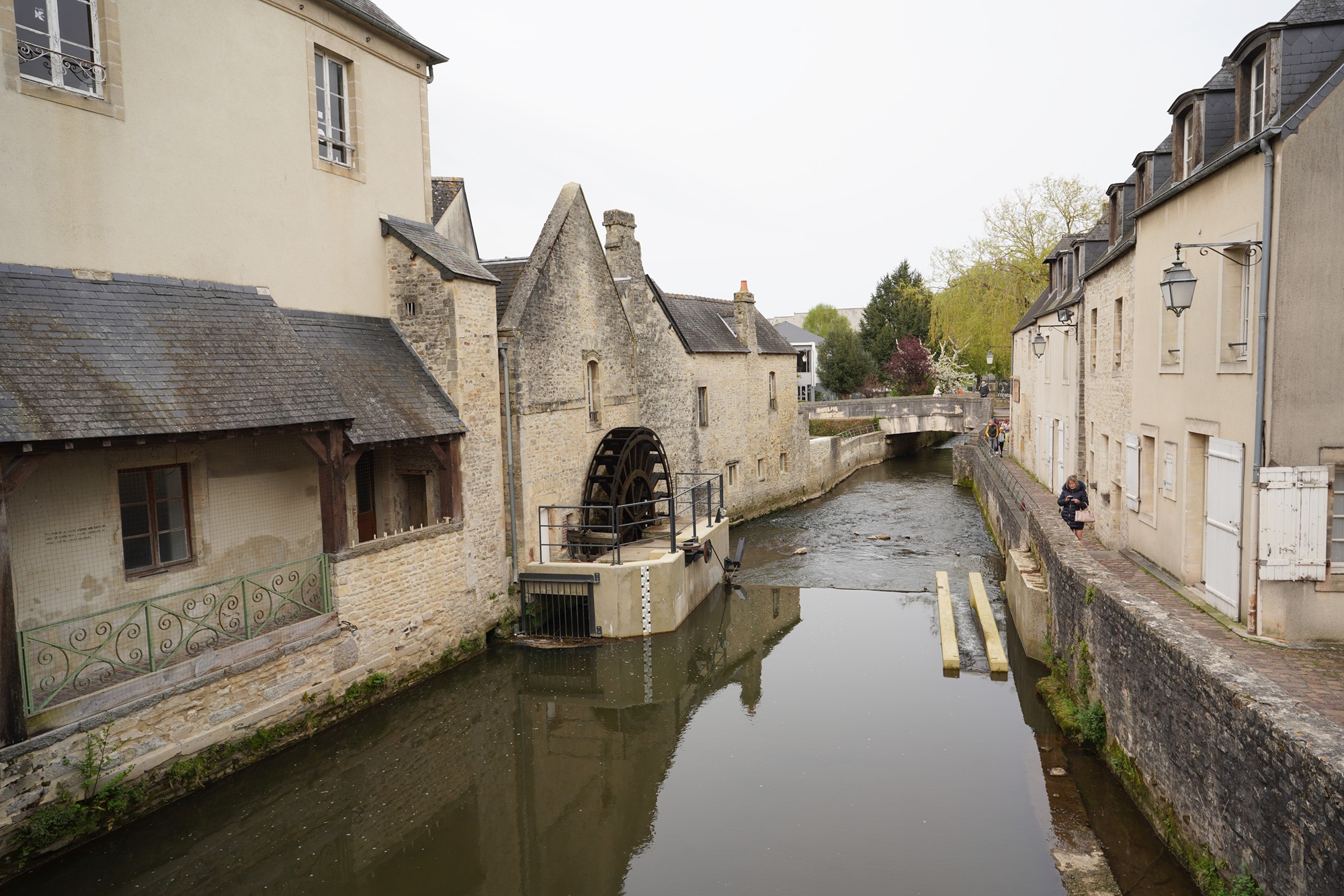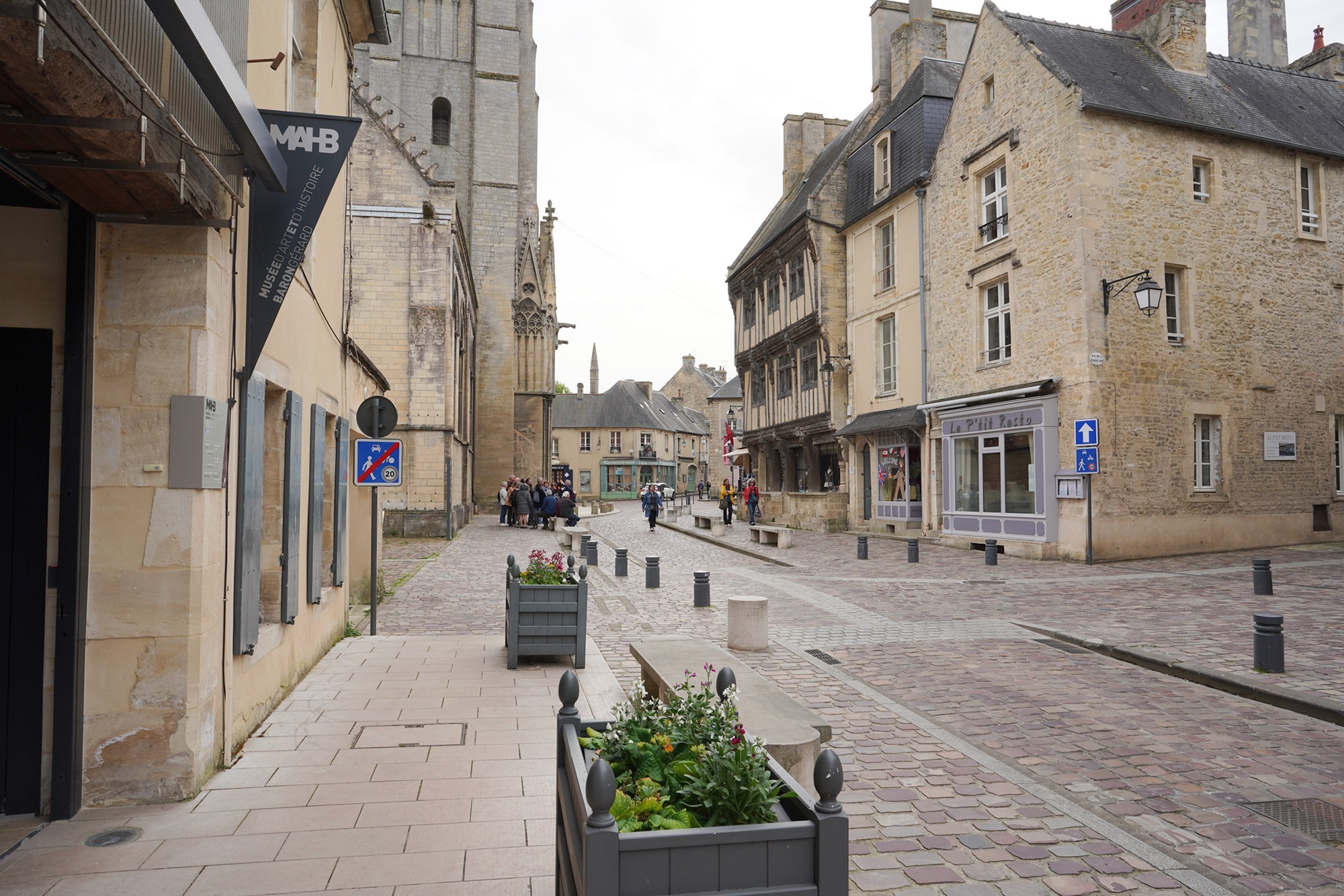Normandy D-Day Beach Tour, France
Pictures of Normandy D-Day Beach Tour in France from Bayeux Town. 883
Normandy American Cemetery: Rte du Cimetiere Americain, 14710 Colleville-sur-Mer, France
Omaha Beach: 12 Rue Bernard Anquetil, 14710 Saint-Laurent-sur-Mer, France
Pointe du Hoc: 14450 Cricqueville-en-Bessin, France
Sainte-Mère-Église: 50480 Sainte-Mère-Église, France
Utah Beach: La Madeleine, 50480 Sainte-Marie-du-Mont, France
The church in Angoville-au-Plain: 1 Rue de l’Église, 50480 Carentan-les-Marais, France
Date Picture Taken: April, 2024
I took a day tour of Normandy D-Day Beaches from Bayeux Town. The first stop was the Normandy American Cemetery.

The Normandy American Cemetery is a military cemetery and memorial located in Colleville-sur-Mer, Normandy, France. It honors American soldiers who died in Europe during World War II.


The back side is this round building
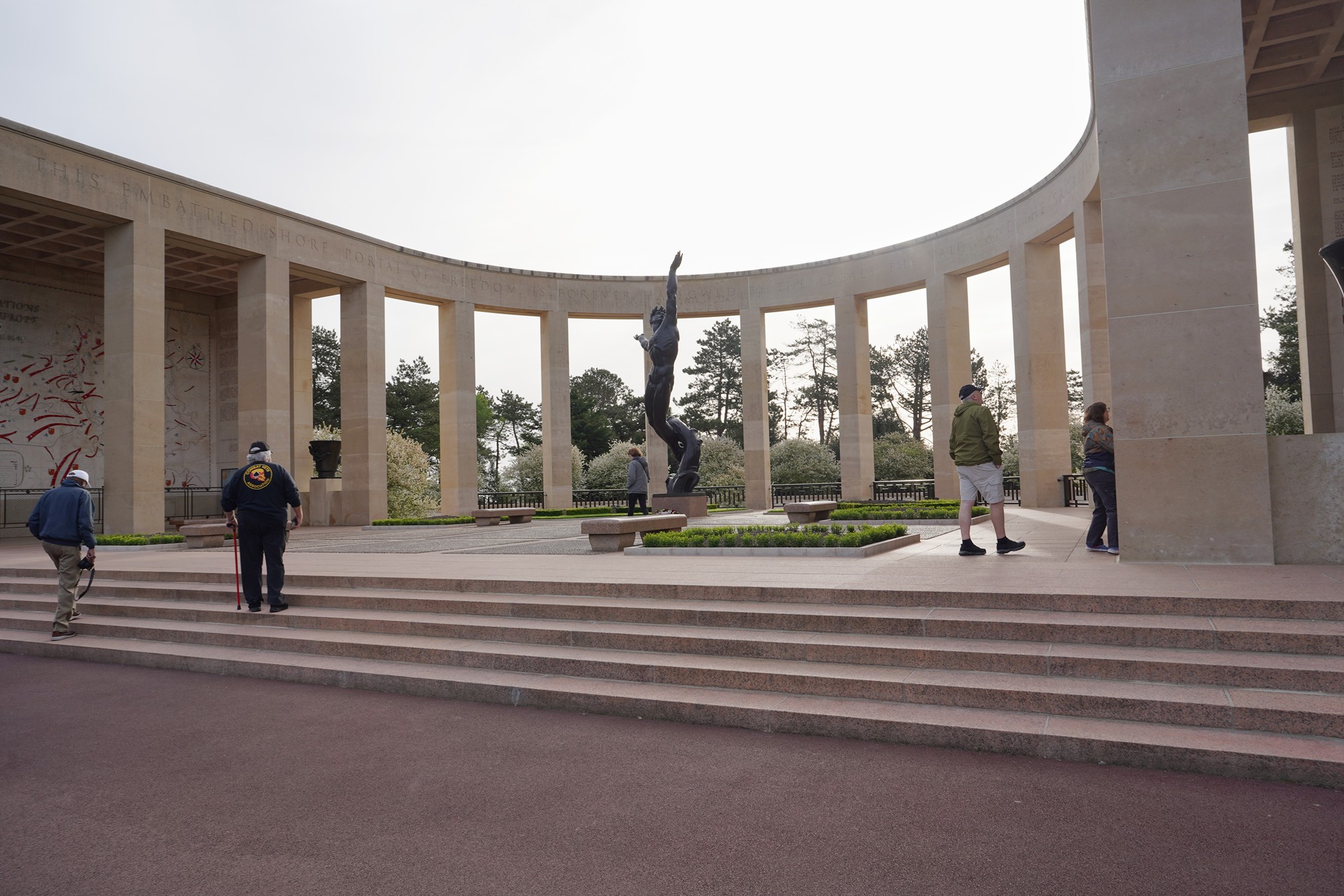
The memorial includes a semicircular colonnade with a bronze statue, “The Spirit of American Youth Rising from the Waves.” There are also maps and narratives of the military operations on the walls.


Went behind the round building


Wall of the Missing: There is a garden of the missing, which lists 1,557 names of soldiers who were missing in action.

Walked back to the round building

Came back to the front of the round building and looked at the right side toward the ocean


The Omaha Beach
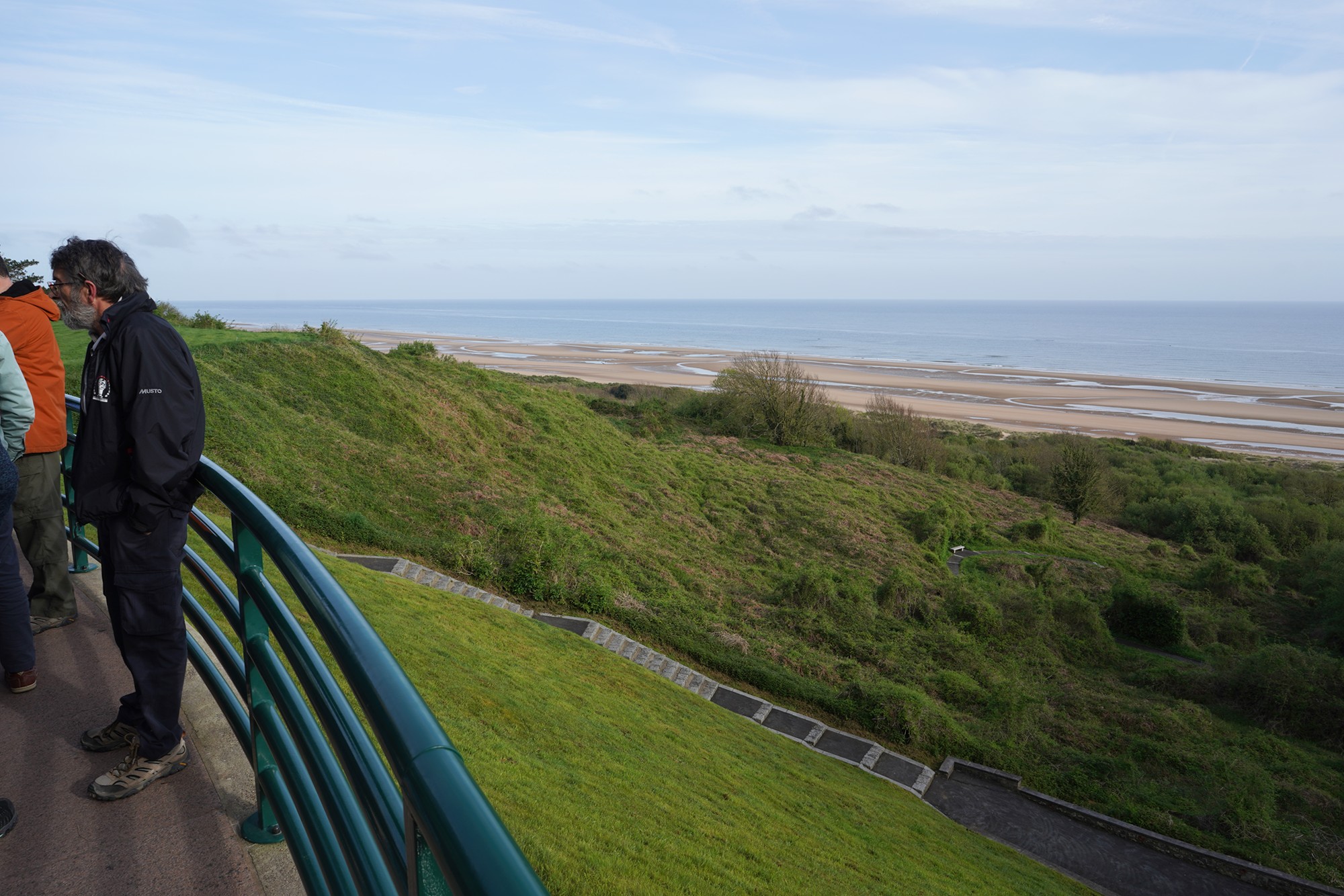


Walked back to the round building


Then turned left toward the tombs


Panoramic view



My back side
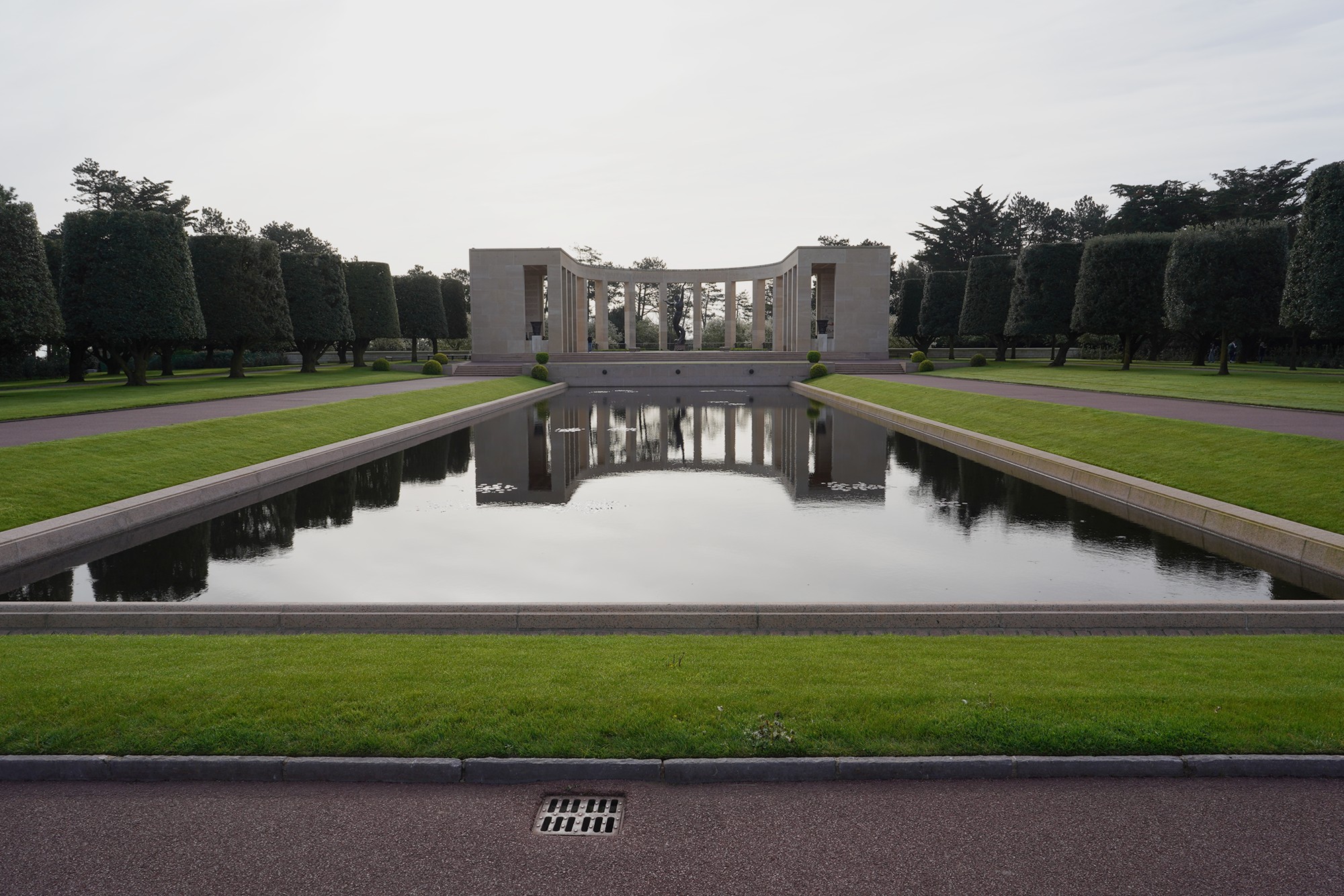
The array of tombs on the left side of the cemetery

This cemetery was established on June 8, 1944, just two days after the D-Day landings on June 6, 1944. It is the first American cemetery on European soil in World War II.

The cemetery is situated on a cliff overlooking Omaha Beach, one of the primary landing sites during the D-Day invasion.

Walked toward another round building far away in the picture

The cemetery covers 172.5 acres and contains the graves of 9,385 military dead, most of whom lost their lives in the D-Day landings and ensuing operations.



Chapel: A chapel in the center of the cemetery honors the fallen and provides a place for reflection.


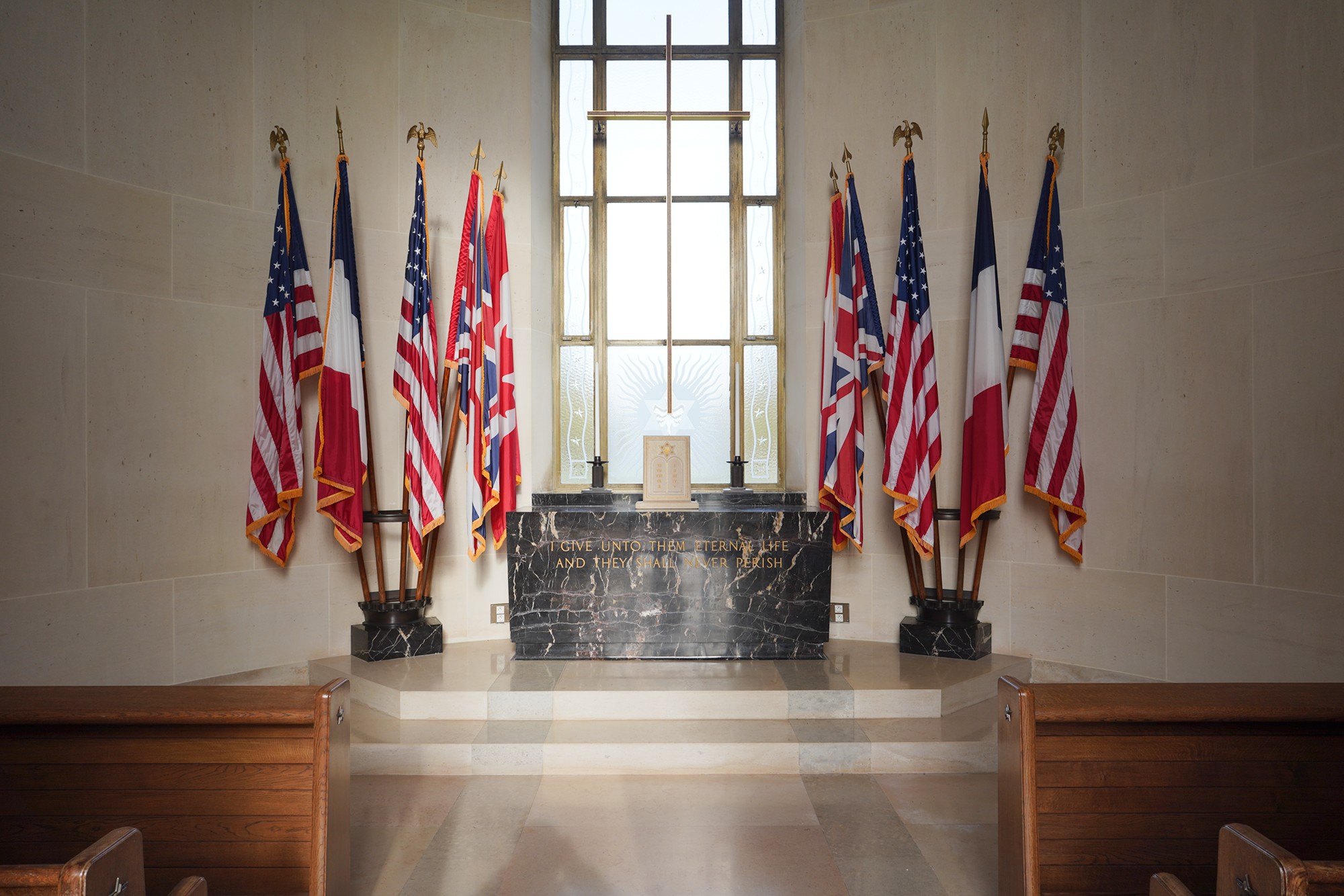

Came out of the building and looked forward

Walked back to the front of the cemetery








Looked my back again


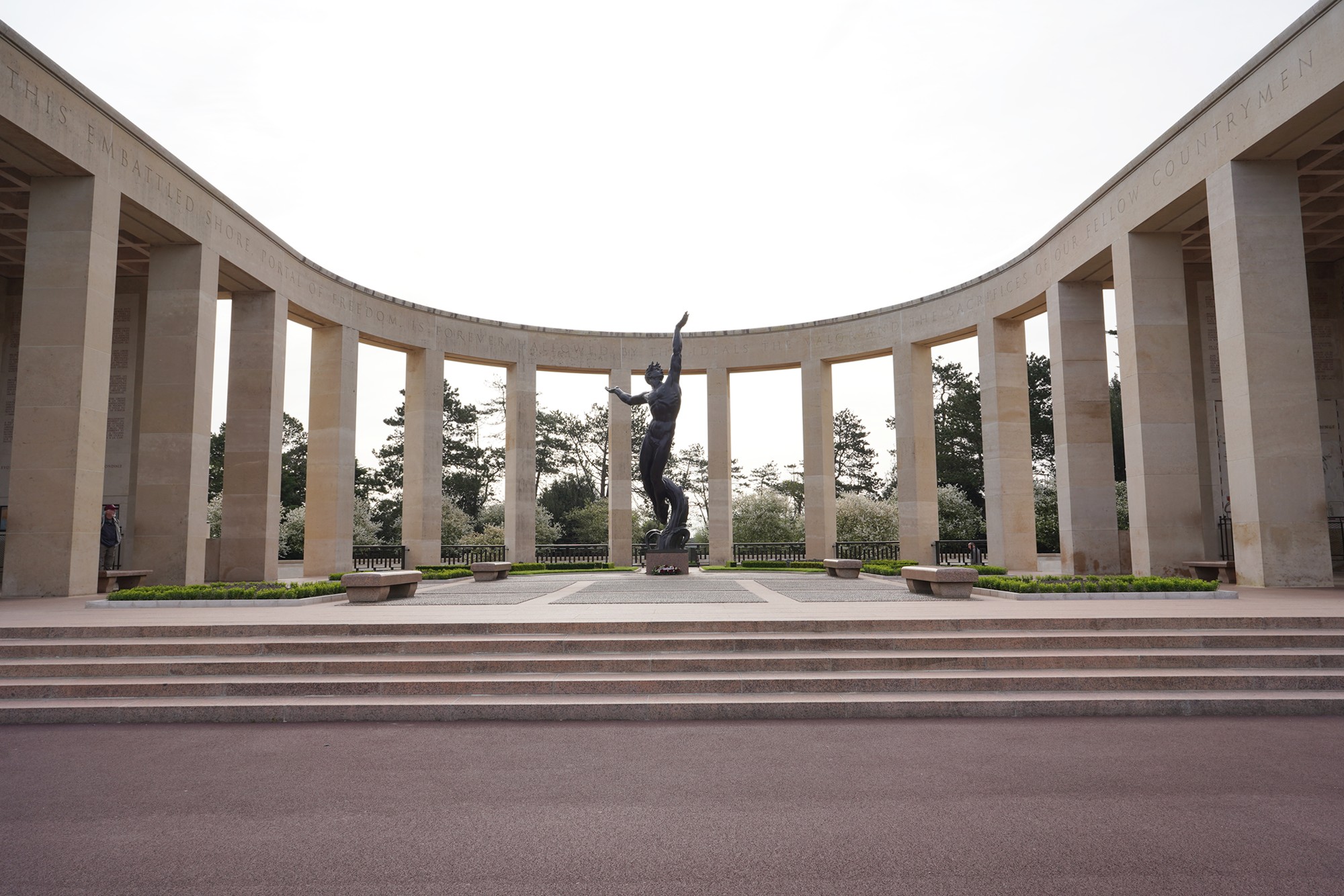

After the cemetery, we arrived at Omaha Beach.

Omaha Beach is one of the five main landing areas of the Normandy Invasion, also known as D-Day, during World War II
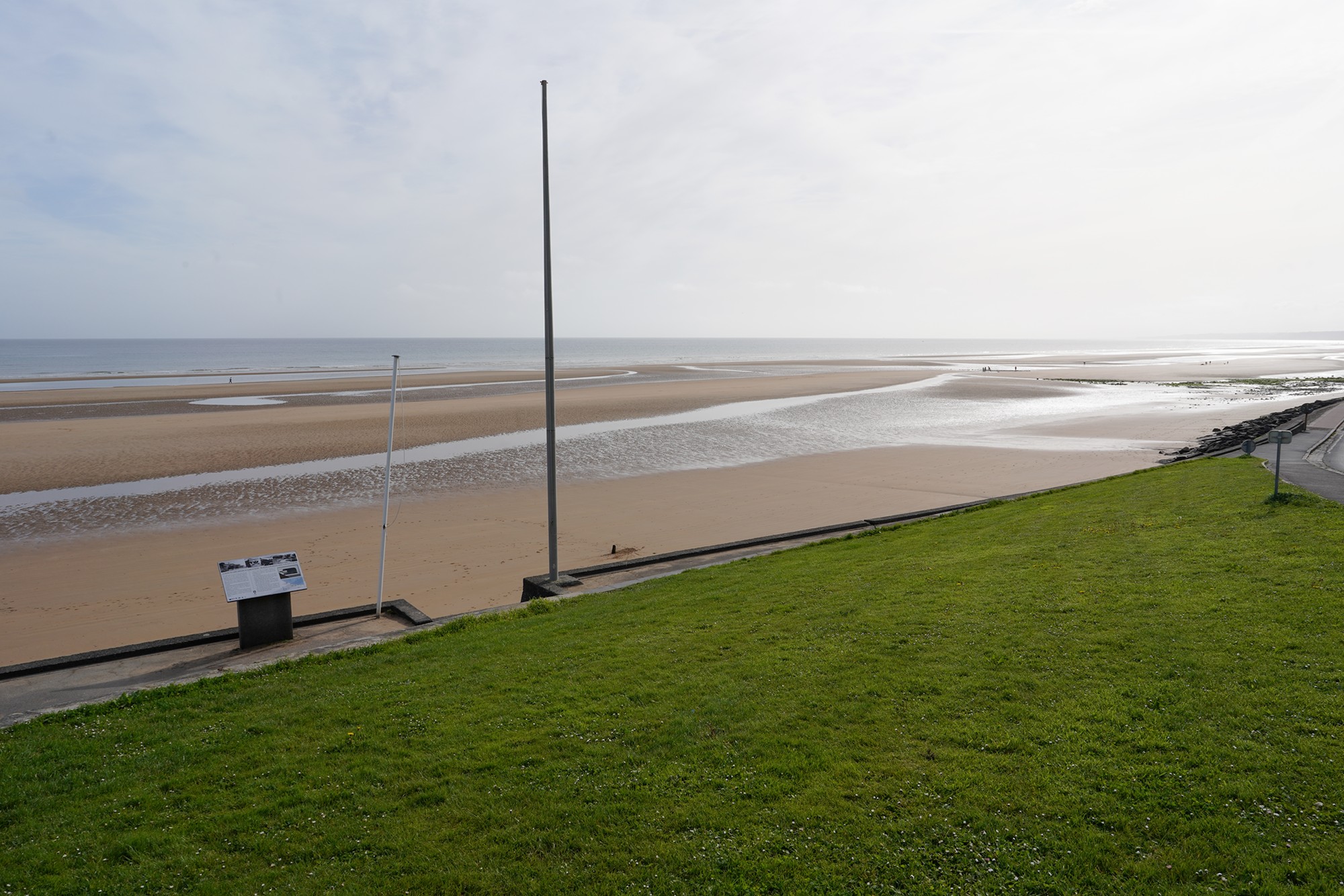
Omaha Beach is located on the coast of Normandy, France, stretching approximately 5 miles (8 kilometers) between the villages of Vierville-sur-Mer and Sainte-Honorine-des-Pertes.

The landings took place on June 6, 1944, and were a critical component of Operation Overlord, the Allied invasion of German-occupied Western Europe.

The beach was assaulted primarily by American forces, specifically the U.S. 1st and 29th Infantry Divisions, along with various units of the U.S. Army Rangers.

Panoramic View

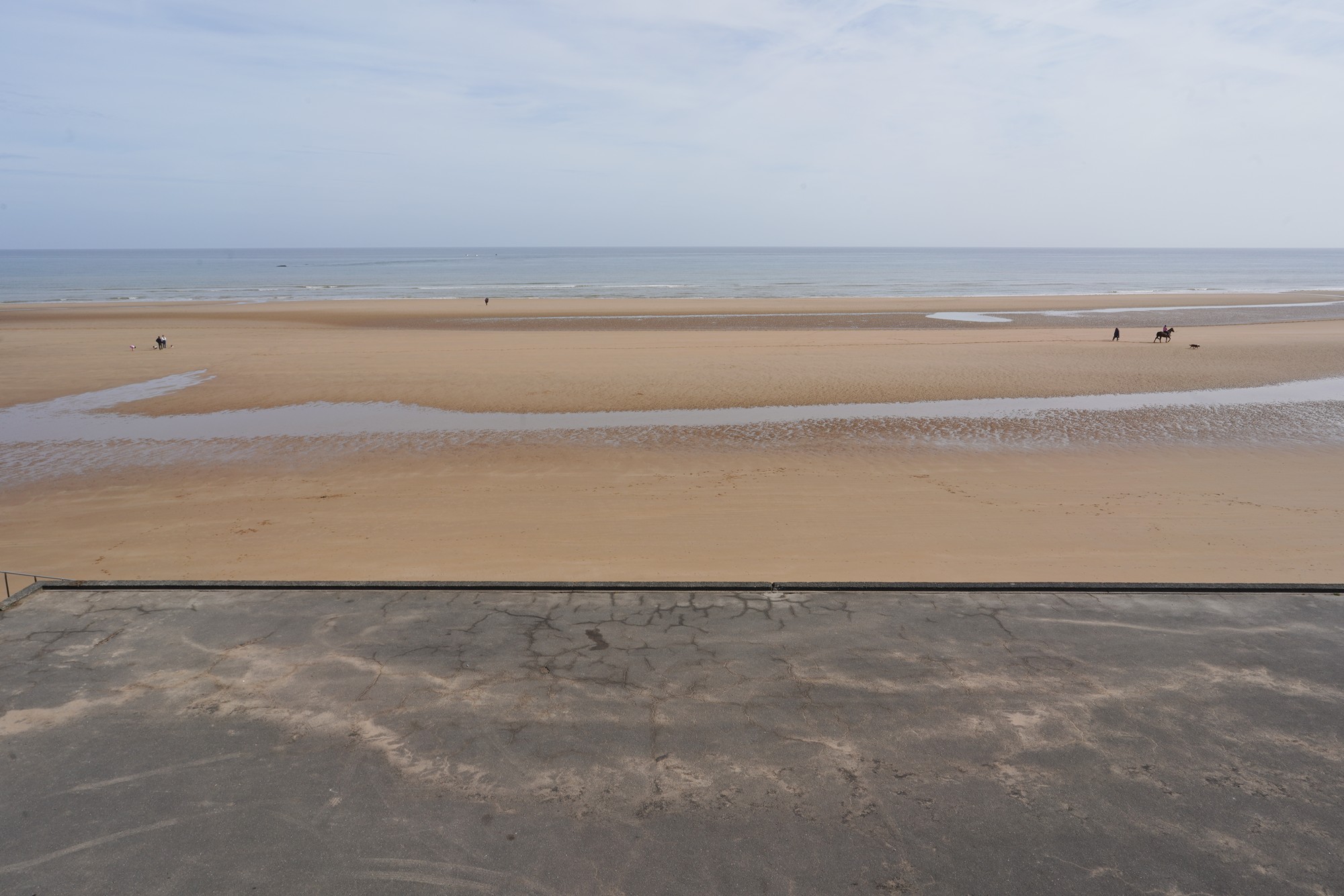





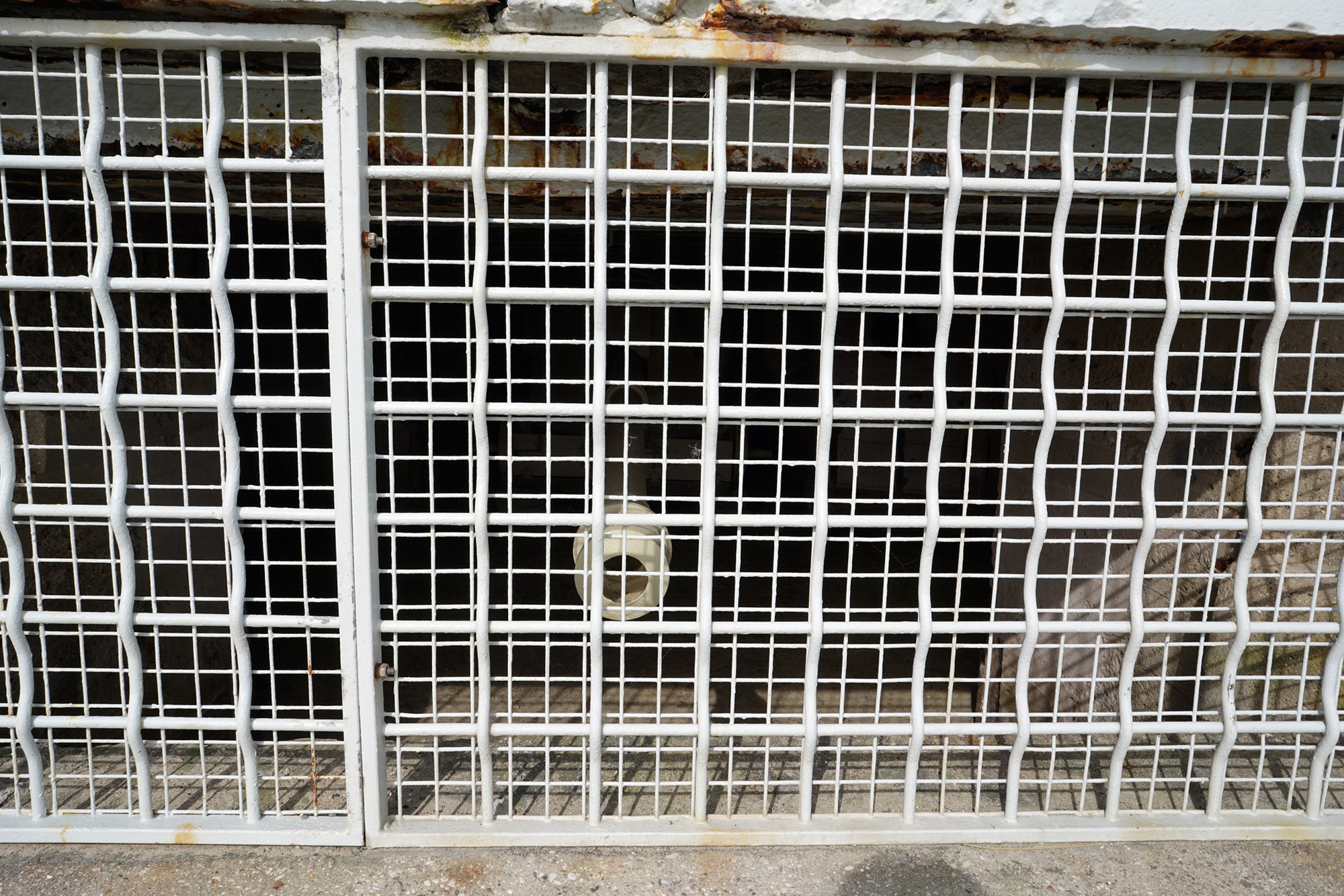


Walked down to the beach

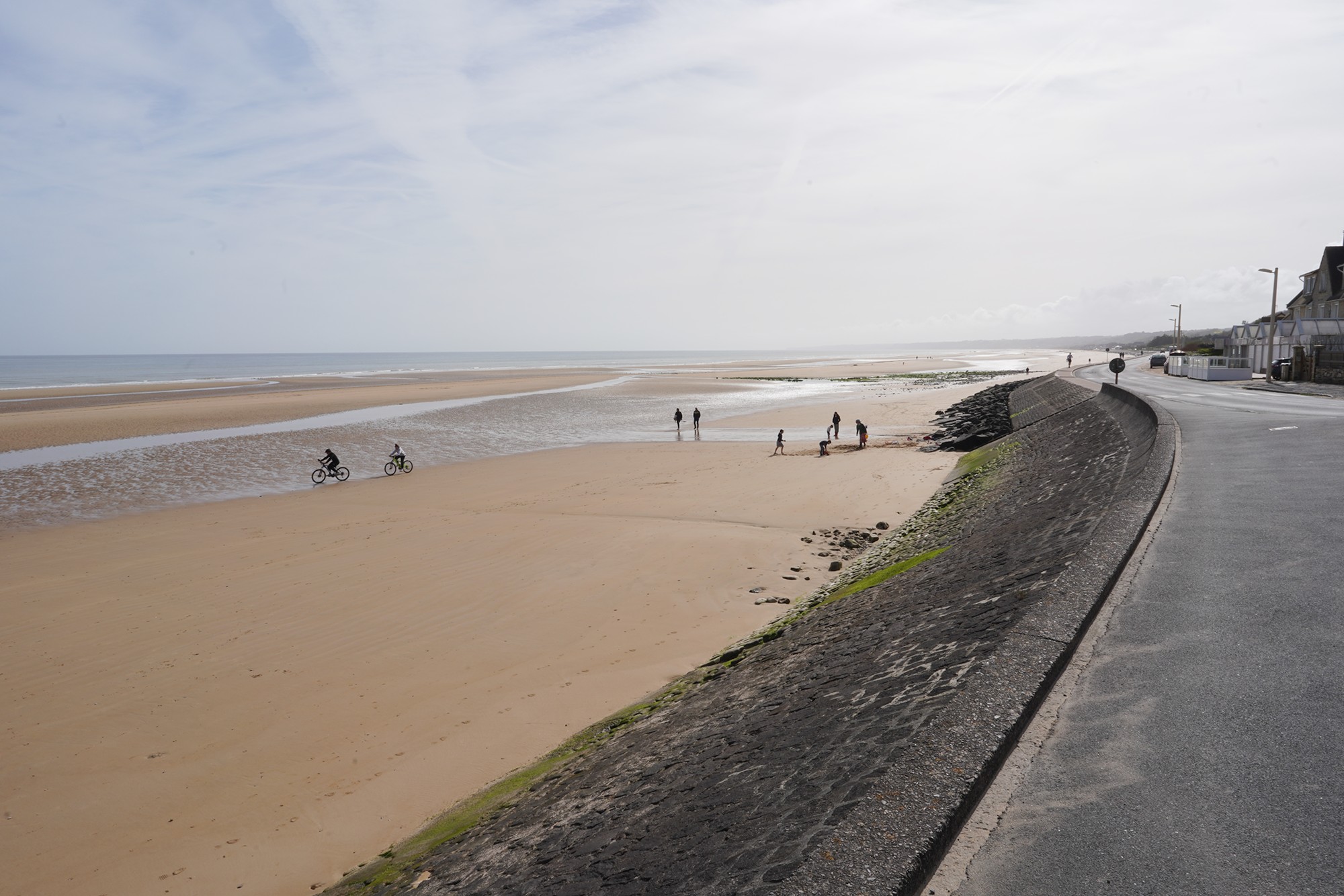
The primary objective of the landing was to secure the beachhead, link up with the adjacent landing zones (Gold Beach to the east and Utah Beach to the west), and advance inland to capture key strategic points and facilitate the larger Allied invasion.

The landings at Omaha Beach faced significant difficulties, including rough seas, heavily fortified German defenses, and challenging terrain. German resistance was fierce, resulting in high casualties among the American troops.

Omaha Beach saw some of the highest casualties of the D-Day landings, with estimates ranging from 2,000 to over 5,000 American soldiers killed, wounded, or missing on the first day.
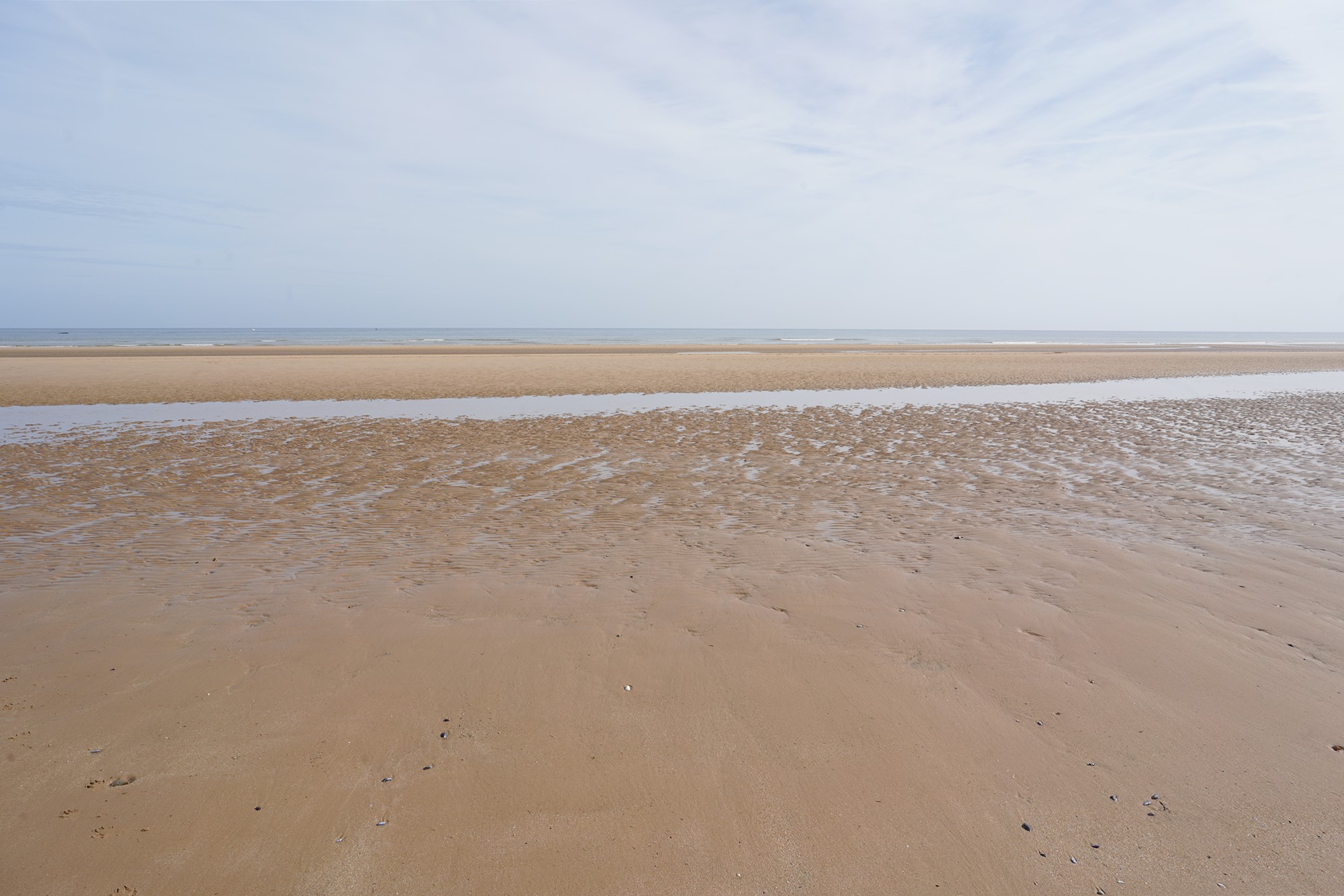
Despite the heavy losses and initial setbacks, the American forces were able to secure Omaha Beach by the end of the day. The successful landings at Omaha Beach were crucial for the overall success of the Normandy Invasion and the subsequent liberation of Western Europe from Nazi occupation.

Today, Omaha Beach is a site of historical significance and remembrance. The Normandy American Cemetery, located above the beach, serves as a poignant tribute to the soldiers who fought and died during the D-Day landings.





After Omaha Beach we moved to Pointe du Hoc.




Pointe du Hoc is a prominent cliff overlooking the English Channel on the coast of Normandy in northern France. It is located between Omaha Beach to the west and Utah Beach to the east, along the Normandy coast.

The point was heavily fortified by the Germans with a series of bunkers, artillery placements, and machine gun nests. Its elevated position provided a commanding view over the landing beaches, making it a critical target for the Allies.








360-degree view of the area



















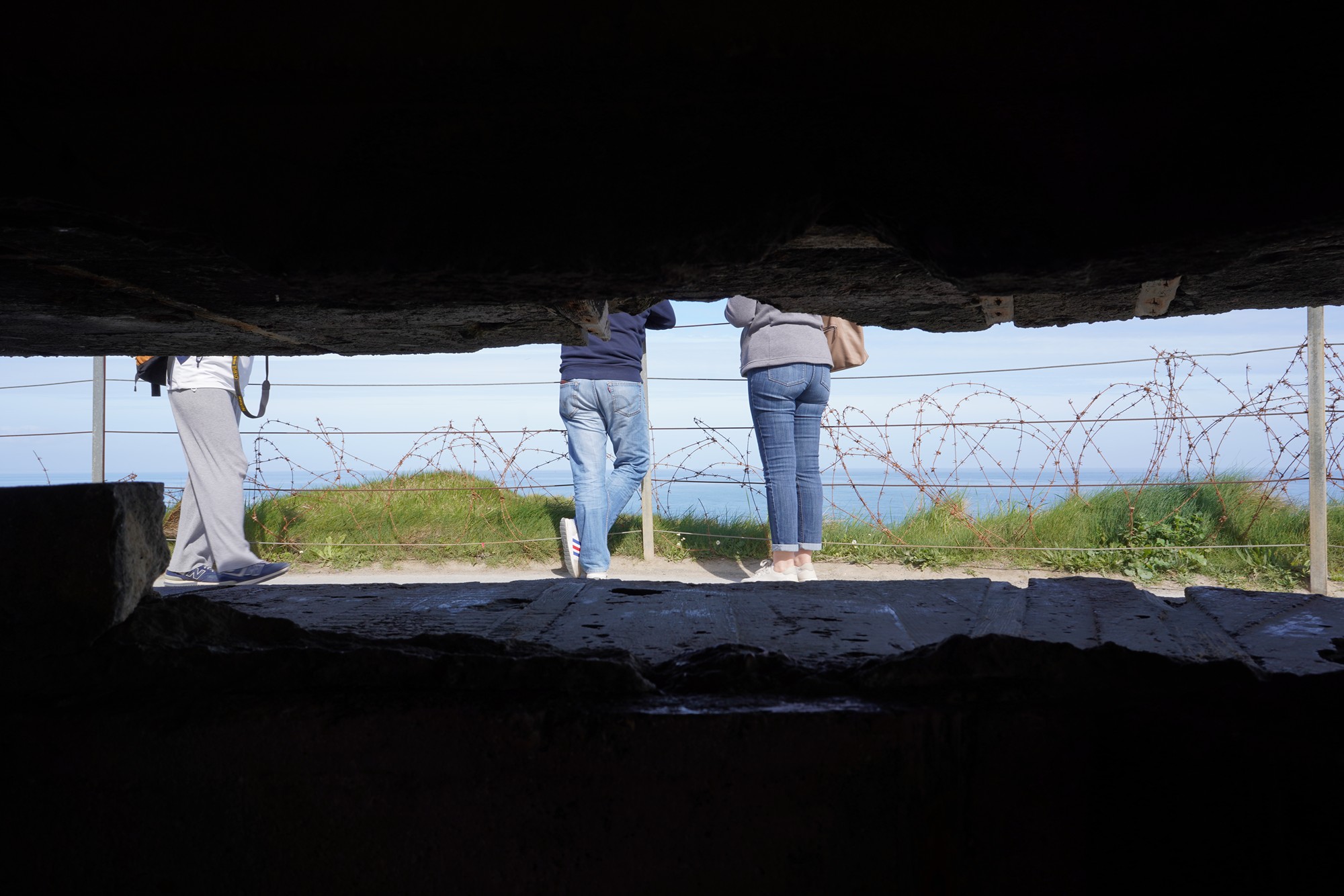
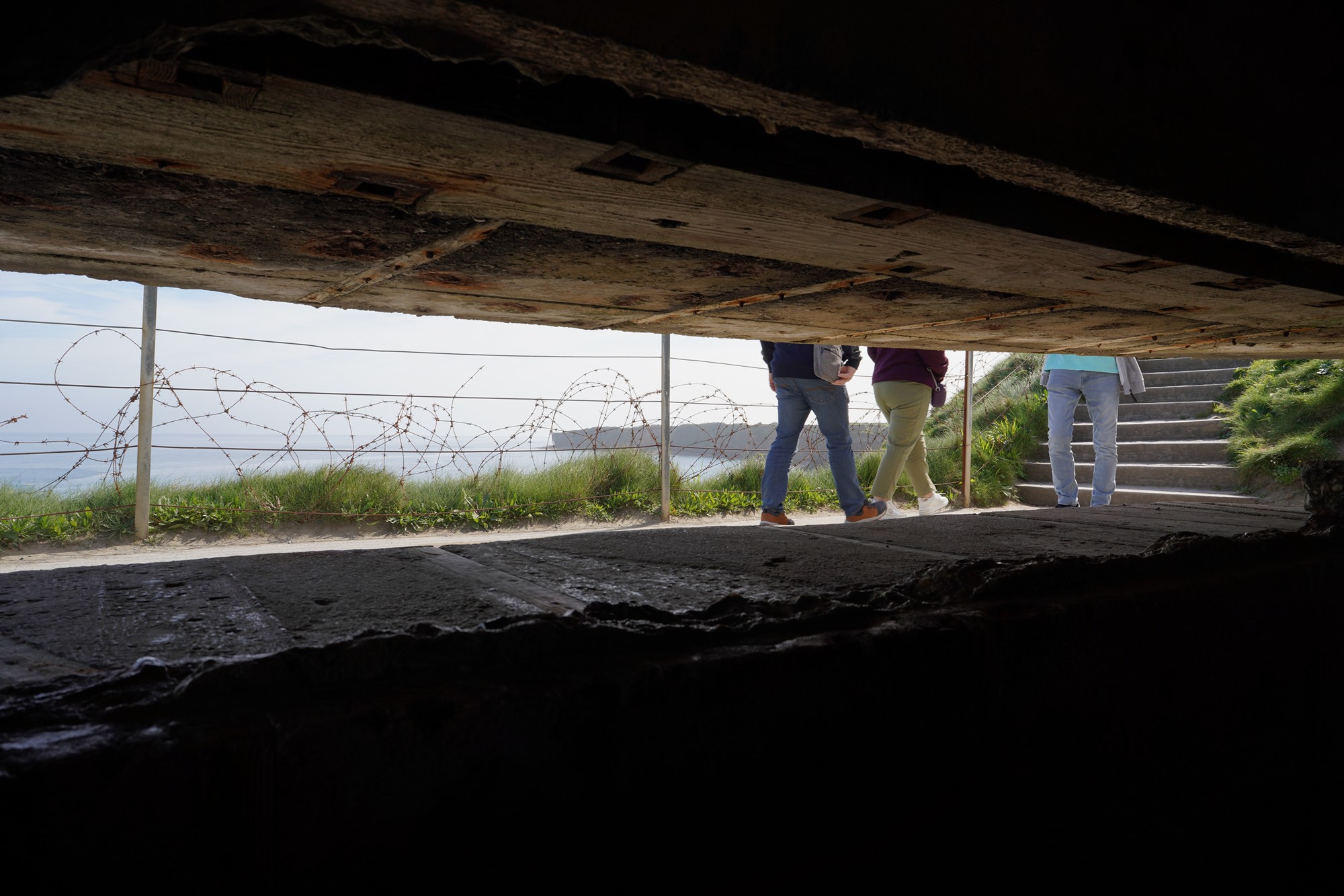
On June 6, 1944, during the D-Day invasion, the U.S. Army Rangers were tasked with climbing the 100-foot (30-meter) cliffs to neutralize the German artillery positions that threatened the landings on Omaha and Utah Beaches.

The 2nd and 5th Ranger Battalions, led by Lieutenant Colonel James Earl Rudder, undertook the dangerous mission. Using ropes, ladders, and grappling hooks, the Rangers climbed the cliffs under heavy enemy fire.

The assault was extremely perilous, with heavy casualties among the Rangers. Despite this, they succeeded in reaching the top and disabling the German guns, which had actually been moved inland but were still a threat. They then defended the position against counterattacks until reinforcements arrived.






Today, Pointe du Hoc is preserved as a historical site, with the battlefield largely intact. The craters from the bombardment and the remnants of German fortifications serve as a testament to the intense fighting that took place. A memorial and museum honor the bravery and sacrifice of the Rangers who took part in the operation.










After Pointe du Hoc, we arrived at Sainte-Mère-Église.
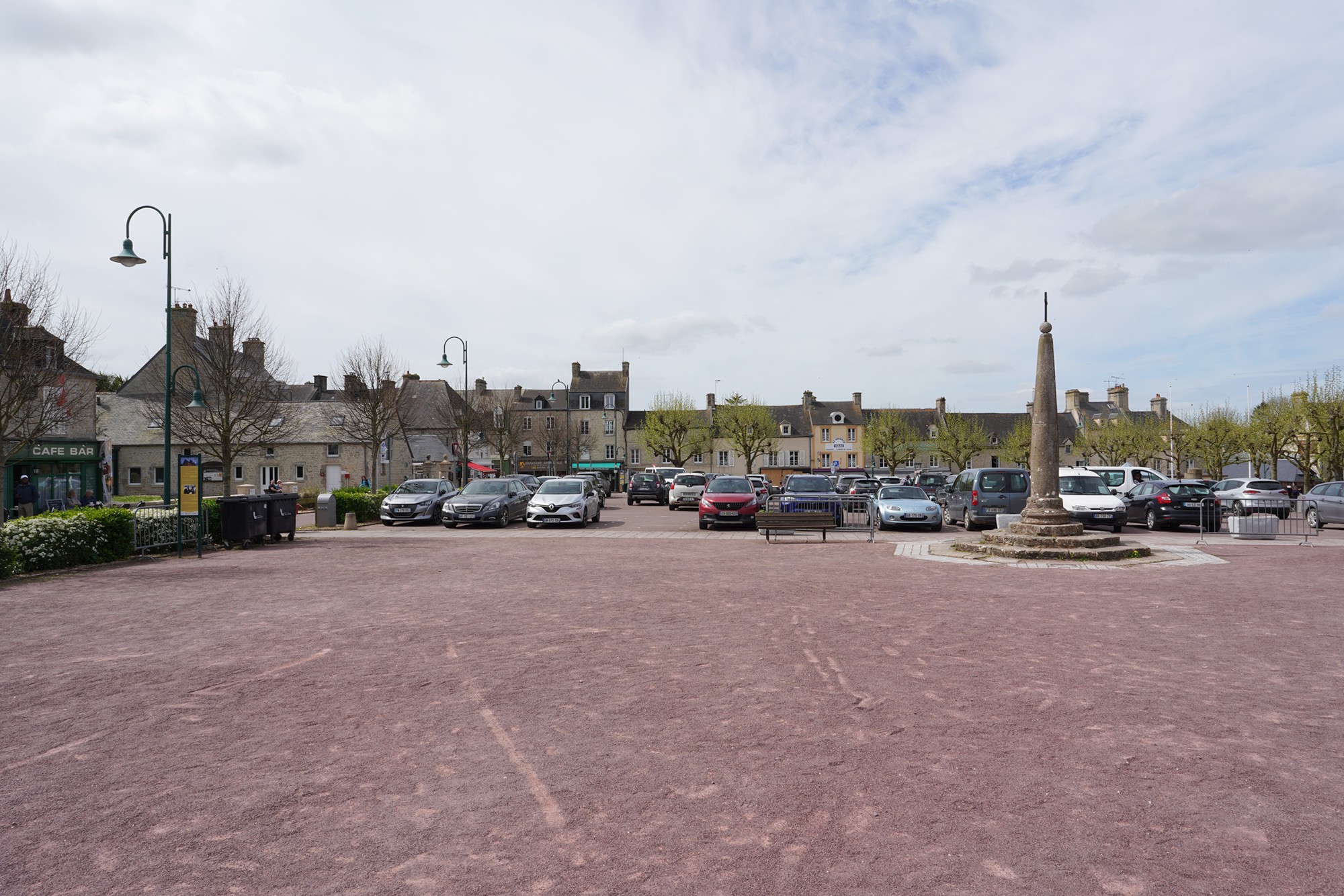
Sainte-Mère-Église is located in the Manche department of Normandy, approximately 15 kilometers inland from Utah Beach.

The town was a critical objective for the 82nd and 101st Airborne Divisions during the D-Day invasion on June 6, 1944. The paratroopers were tasked with securing the area to protect the western flank of the landing forces at Utah Beach and to facilitate the movement of troops and supplies inland.

John Steele’s Story: One of the most famous stories associated with Sainte-Mère-Église is that of Private John Steele of the 505th Parachute Infantry Regiment, 82nd Airborne Division. During the early hours of D-Day, Steele’s parachute got caught on the spire of the town’s church, leaving him hanging helplessly. He pretended to be dead for several hours before being captured by German soldiers. He later escaped and rejoined his unit. His story was popularized in the book and film “The Longest Day.”

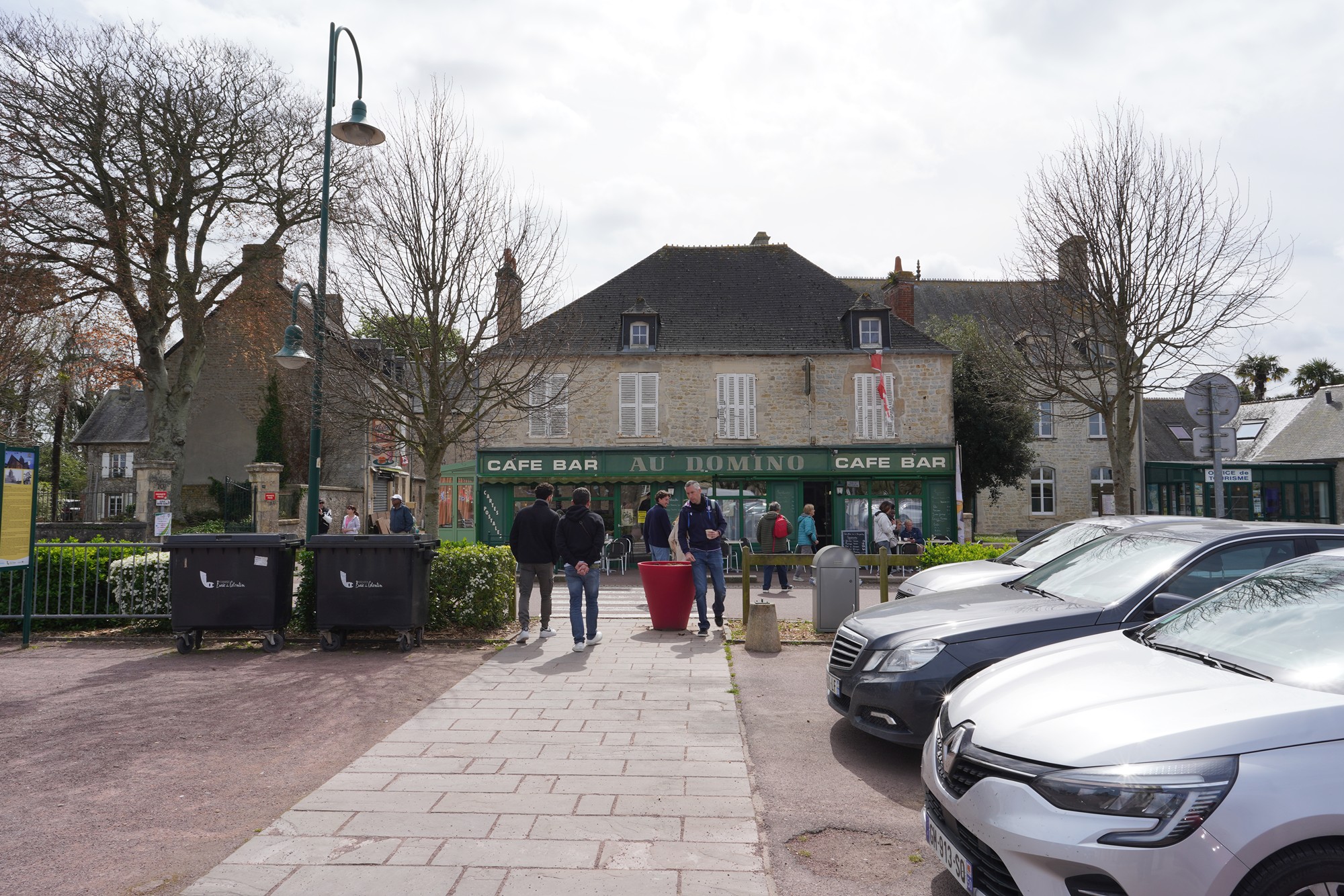





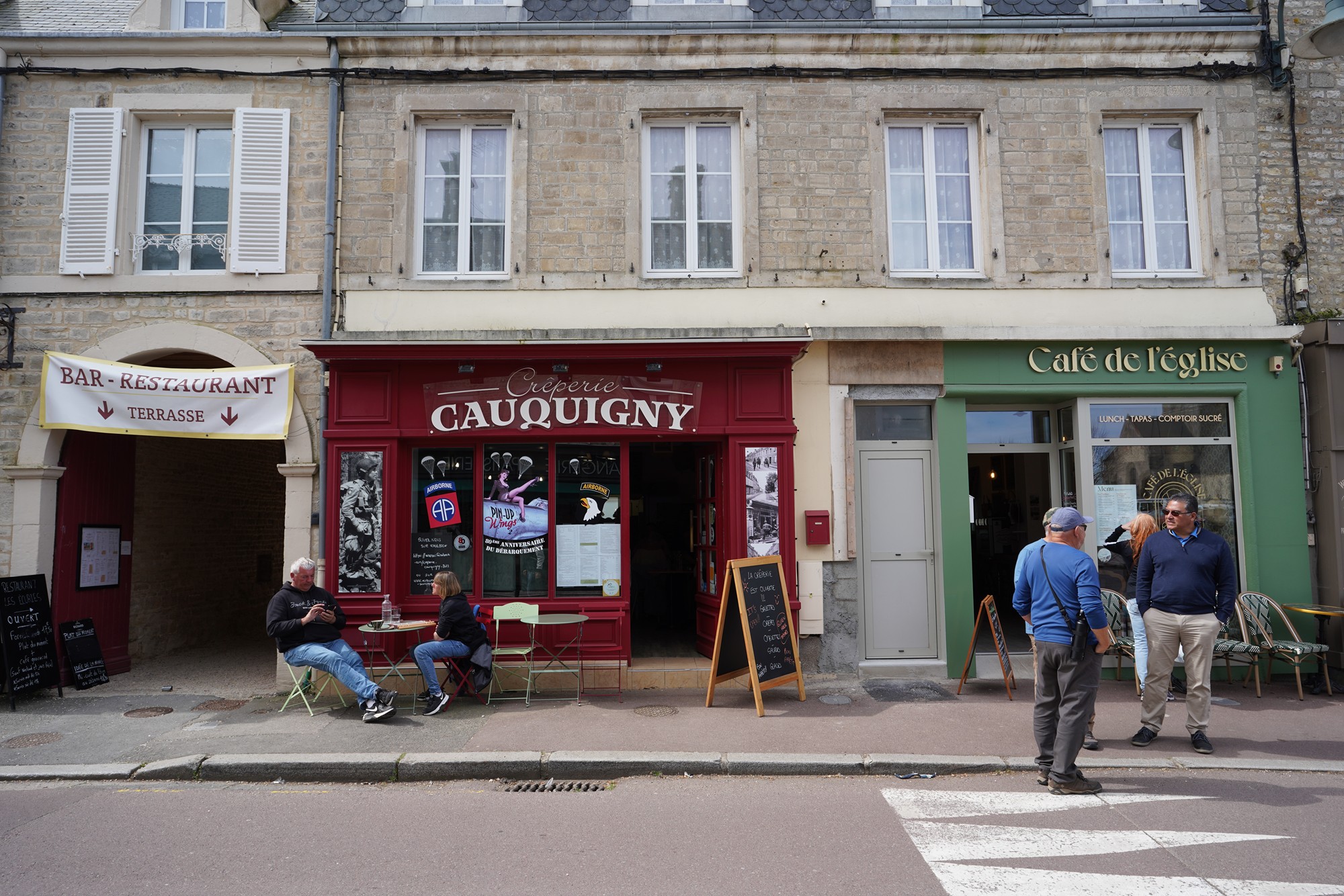

Sainte-Mère-Église became one of the first towns in Normandy to be liberated by the Allied forces. The successful airborne operations helped secure key routes and hinder German counterattacks.


The Airborne Museum in Sainte-Mère-Église is a significant site dedicated to commemorating the D-Day landings and the role of airborne troops during World War II.







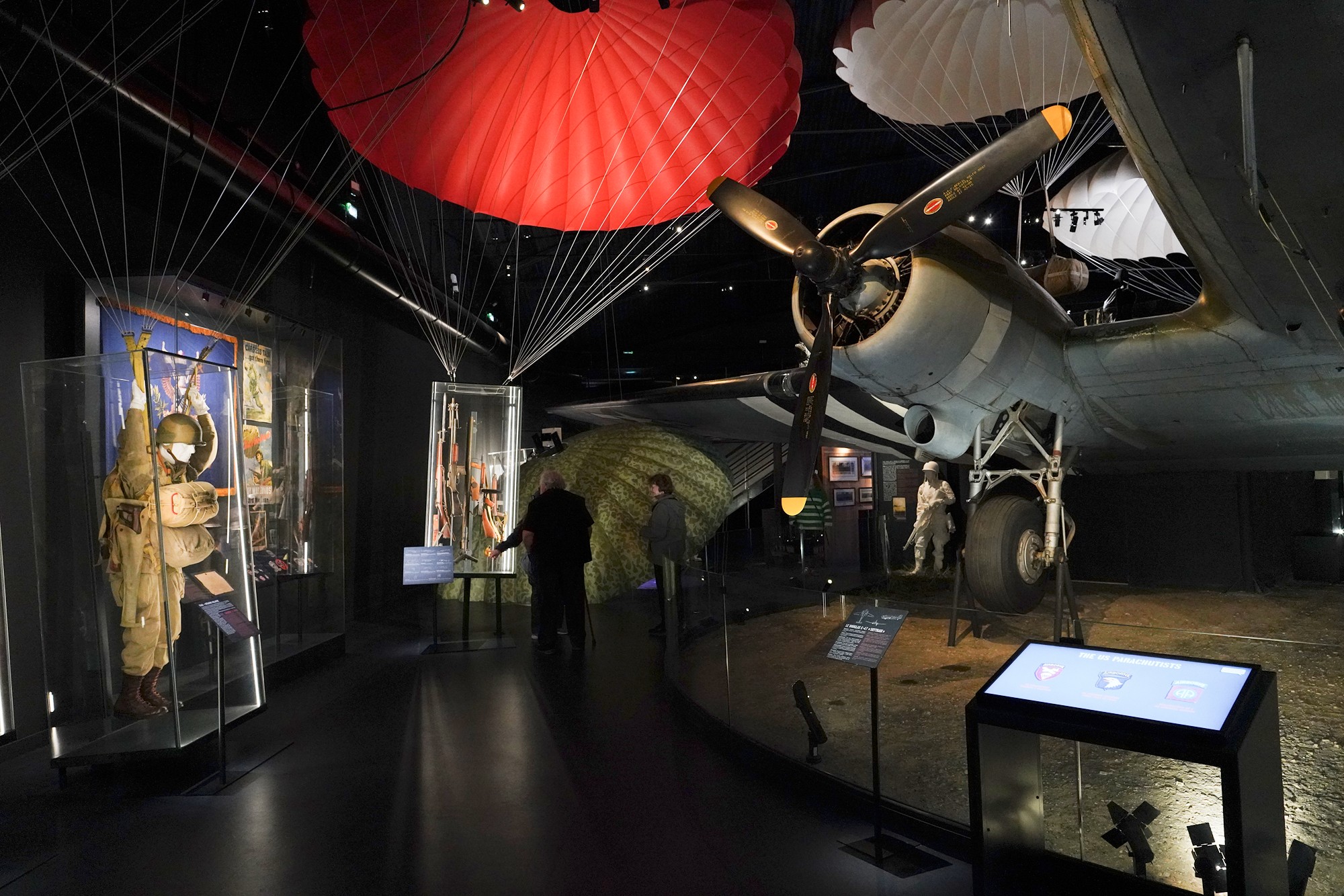









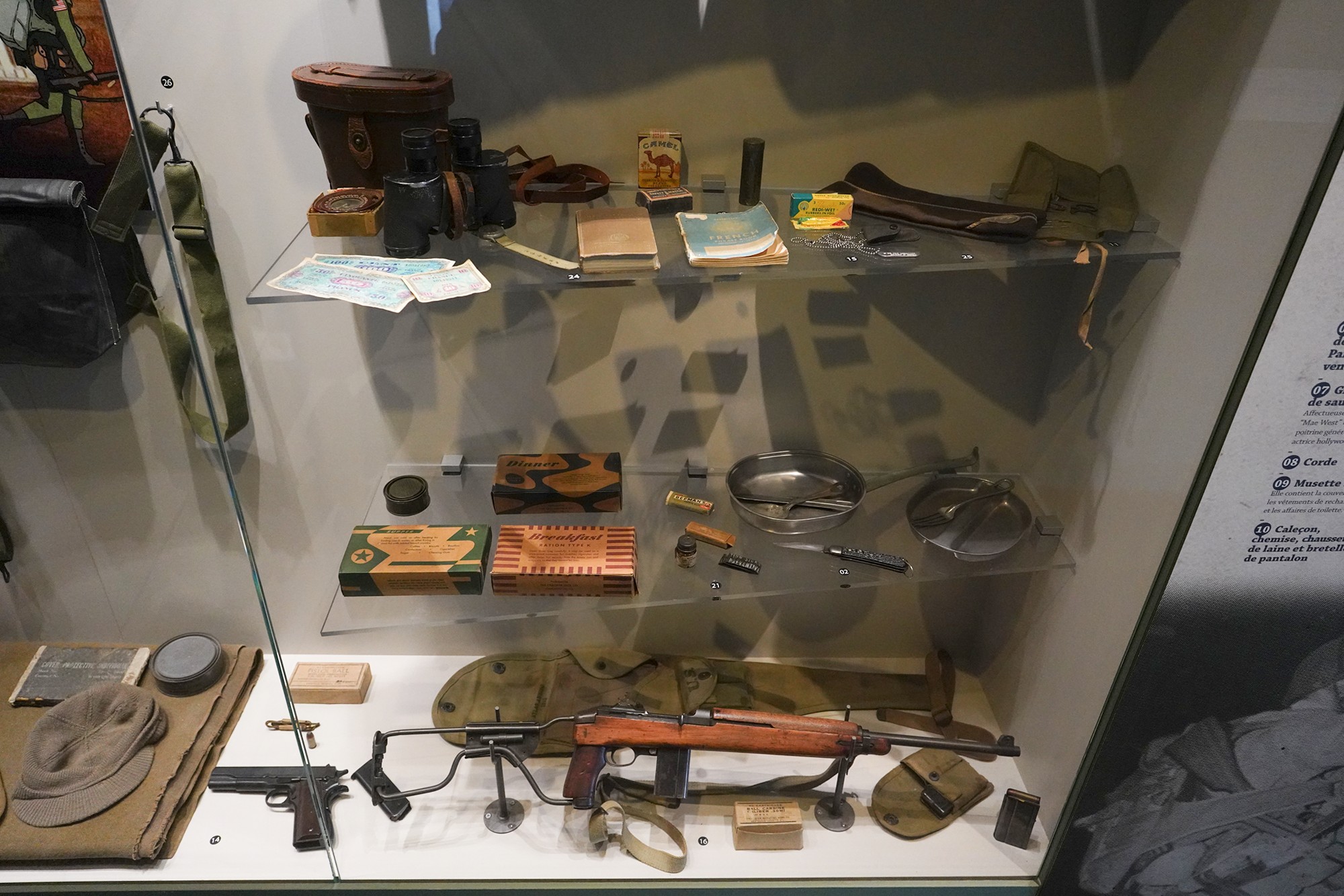








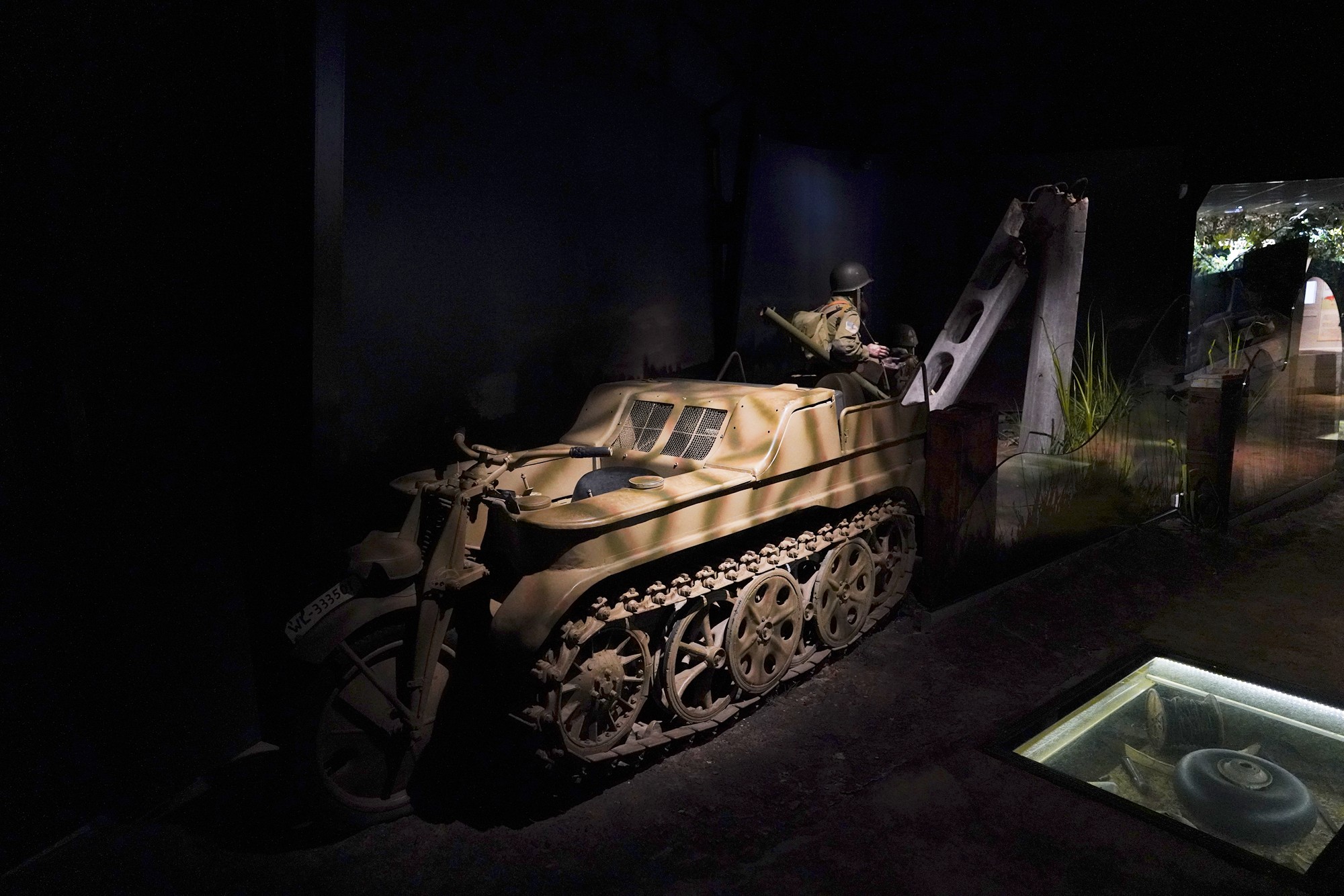





The church of Sainte-Mère-Église remains a prominent landmark, with a mannequin paratrooper and parachute on the steeple commemorating John Steele and the airborne landings.










The area in front of the church




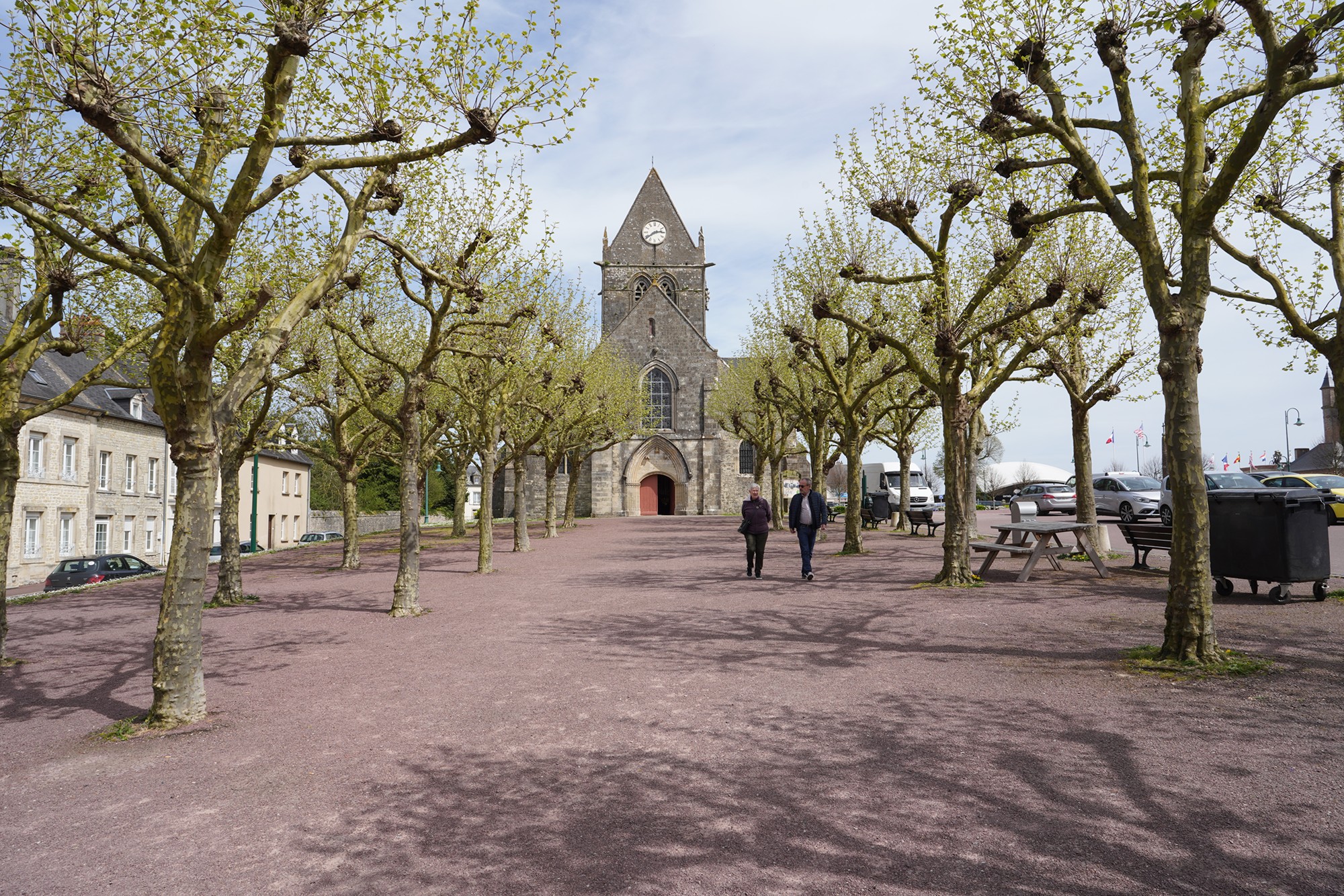
The next stop of the tour was Utah Beach.


Utah Beach is one of the five main landing areas of the Normandy Invasion (D-Day) during World War II.



Utah Beach is situated on the eastern coast of the Cotentin Peninsula, in the Manche department of Normandy, France. It is the westernmost of the five landing beaches.
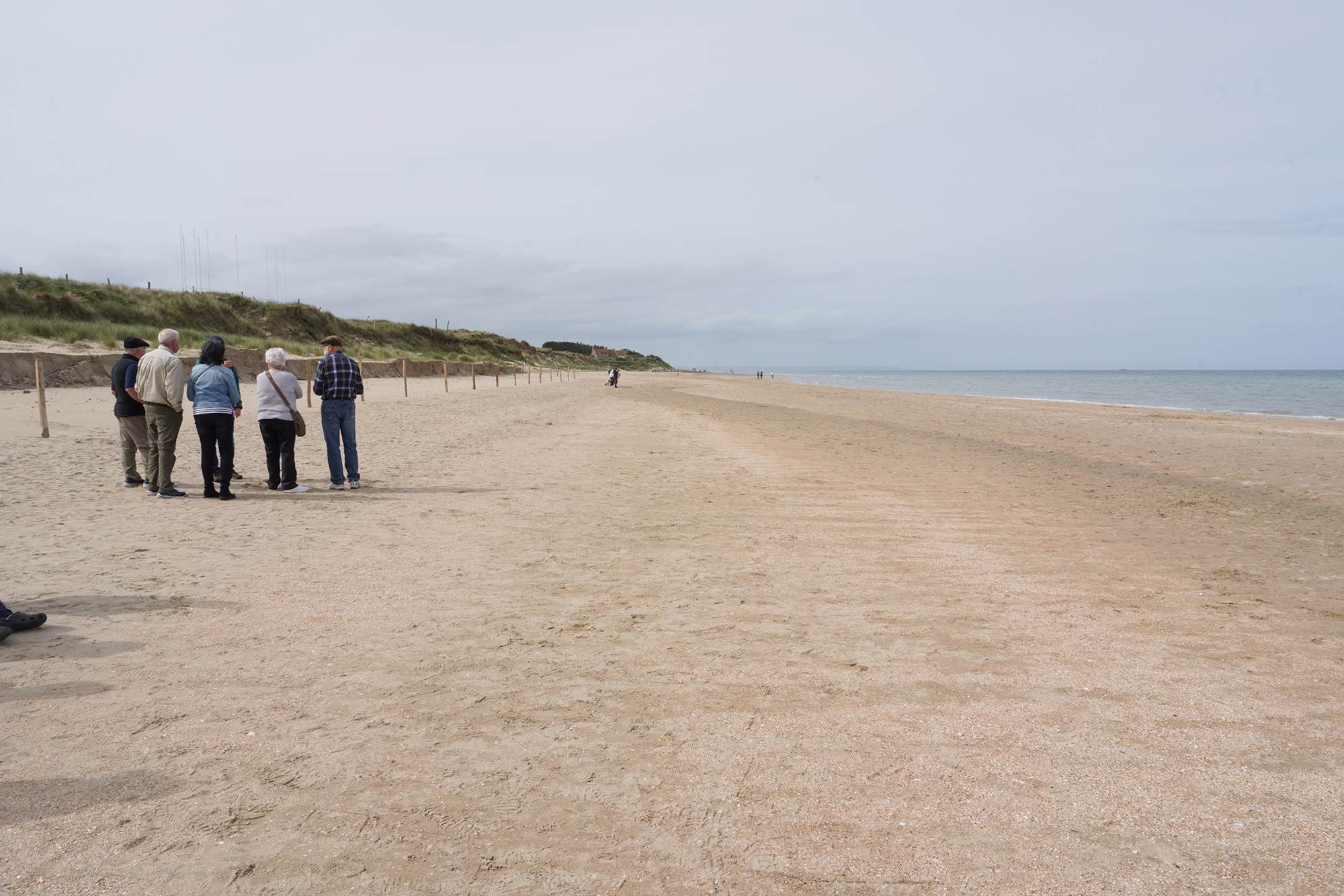
The landings at Utah Beach occurred on June 6, 1944. The beach was assaulted by the U.S. 4th Infantry Division, along with airborne units from the 82nd and 101st Airborne Divisions.

The primary objectives at Utah Beach were to secure a beachhead, link up with the airborne troops who had been dropped inland to secure key bridges and causeways, and to advance towards the key port of Cherbourg.

The initial landings at Utah Beach were relatively successful and faced less resistance compared to Omaha Beach. The first wave of troops landed slightly off target but in a less heavily defended area, which turned out to be advantageous.
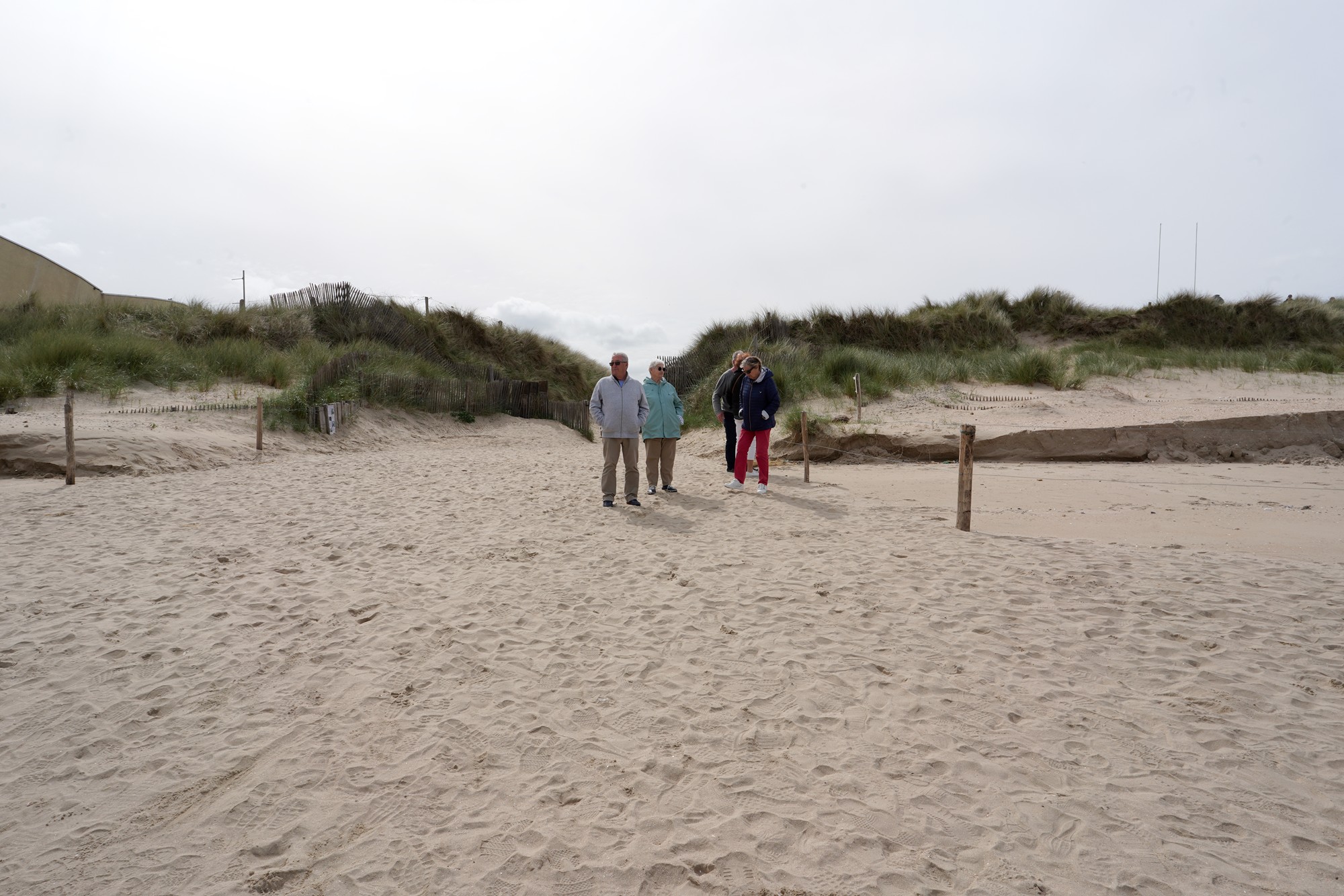
The casualties at Utah Beach were relatively low, with approximately 197 men killed, wounded, or missing on the first day.


Securing Utah Beach allowed the Allies to establish a crucial foothold on the Cotentin Peninsula, which enabled the eventual capture of the port of Cherbourg. This port was vital for the supply and reinforcement of Allied forces in Normandy.



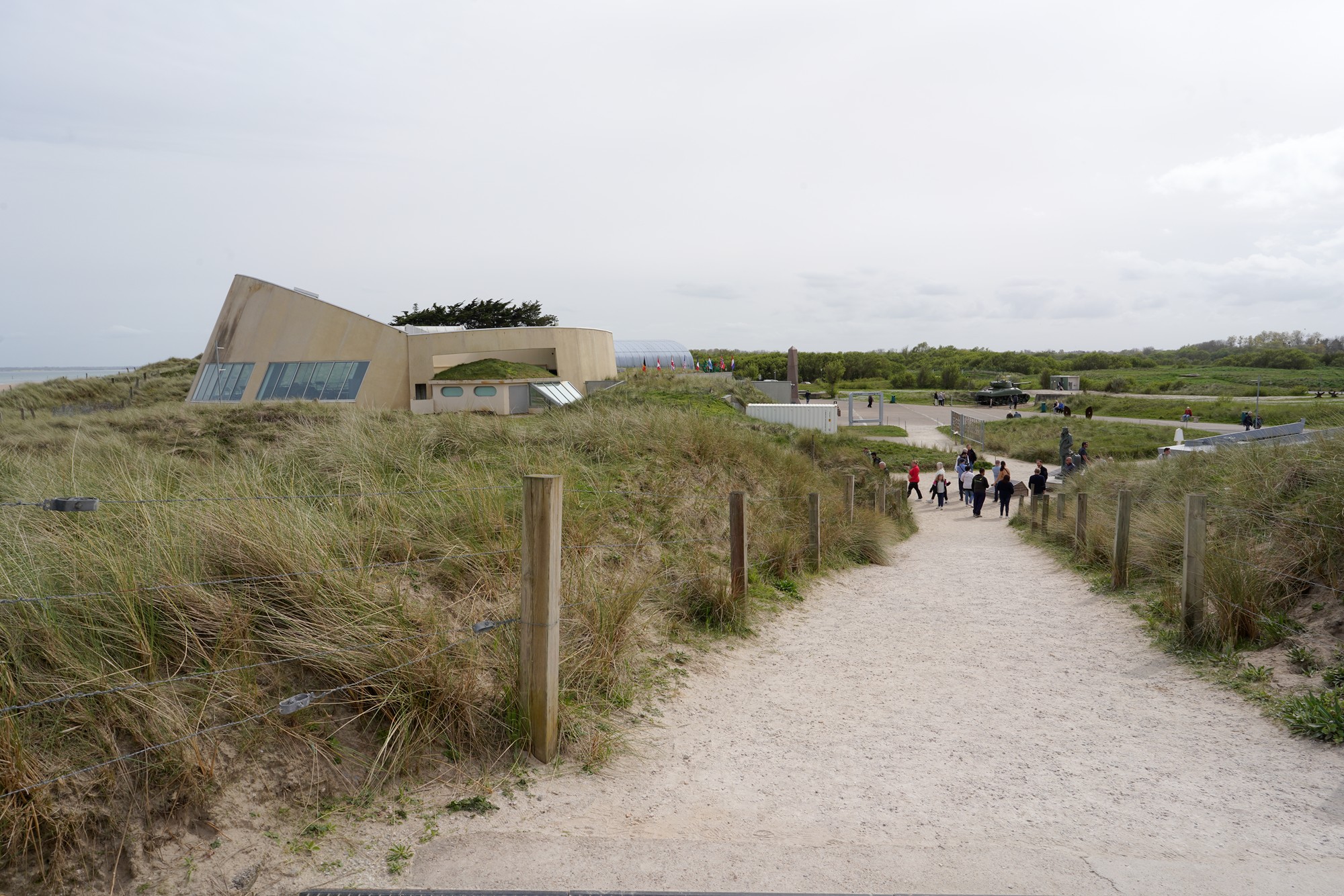
The last stop of the tour was the church in Angoville-au-Plain.
The church in Angoville-au-Plain remains a place of historical significance and is visited by many who wish to honor the courage of two WWII soldiers, Wright and Moore.

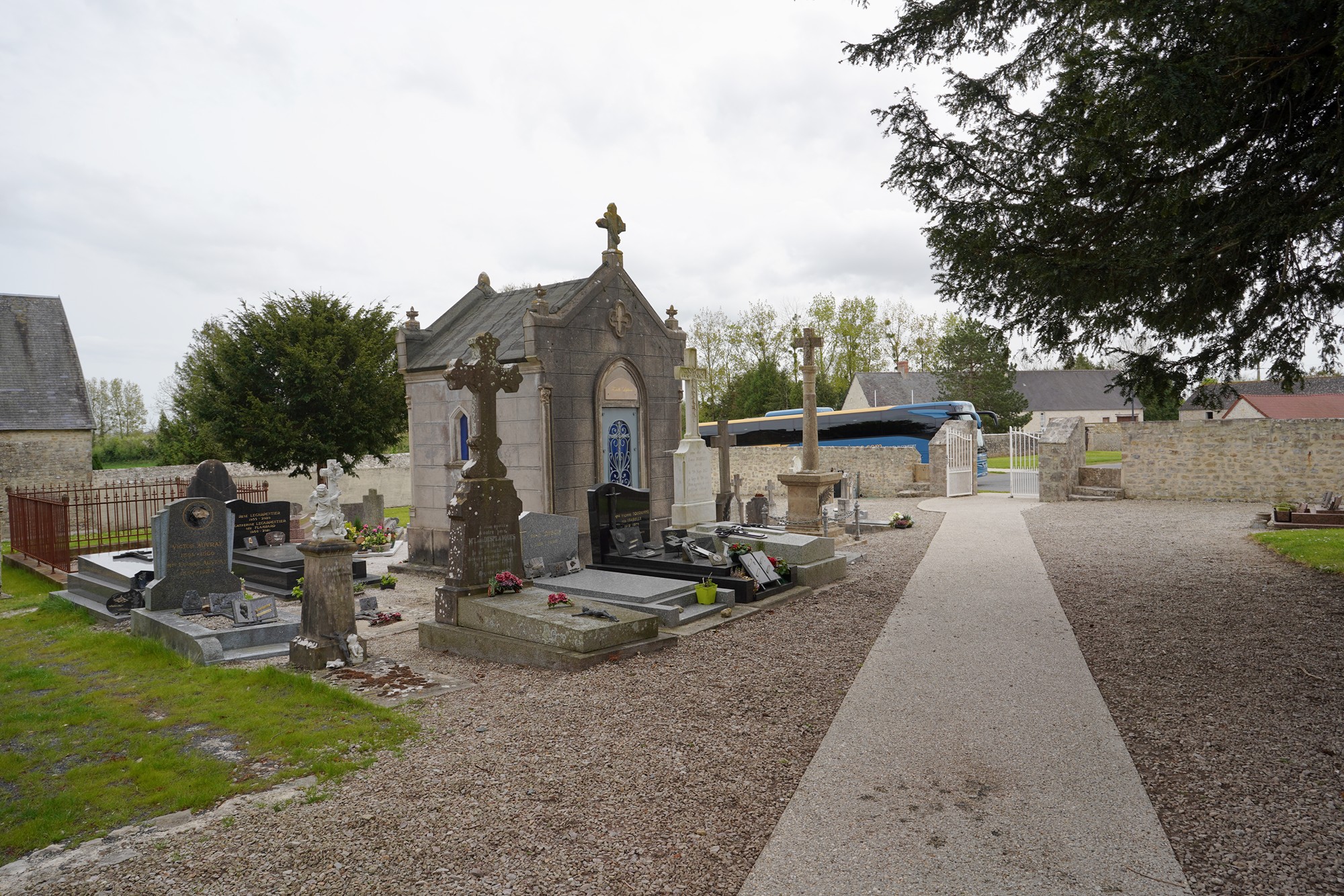
Bob Wright and Kenneth Moore were two medics from the 2nd Battalion, 501st Parachute Infantry Regiment, 101st Airborne Division, who played a heroic role during the D-Day invasion and the subsequent Battle of Normandy. Their story is a remarkable example of courage and dedication to saving lives amidst the chaos of war.

On June 6, 1944, Wright and Moore parachuted into Normandy as part of the airborne operations that preceded the amphibious landings. They landed near the village of Angoville-au-Plain, close to Sainte-Mère-Église.

Despite the confusion and danger, Wright and Moore quickly set up an aid station in the small church of Angoville-au-Plain. The church became a sanctuary where they provided medical care to both American and German soldiers, as well as French civilians, regardless of their nationality.

For nearly 72 hours, Wright and Moore worked tirelessly under fire, treating over 80 wounded individuals. Their commitment to saving lives was unwavering, and they continued their work even as the battle raged around them. At one point, a German soldier entered the church, saw the medics treating the wounded, and chose not to harm them, recognizing their humanitarian efforts.

The church itself was hit by artillery, but the medics’ work continued undeterred. The pews were used as makeshift beds, and the stone floor was stained with blood from their efforts to save lives.

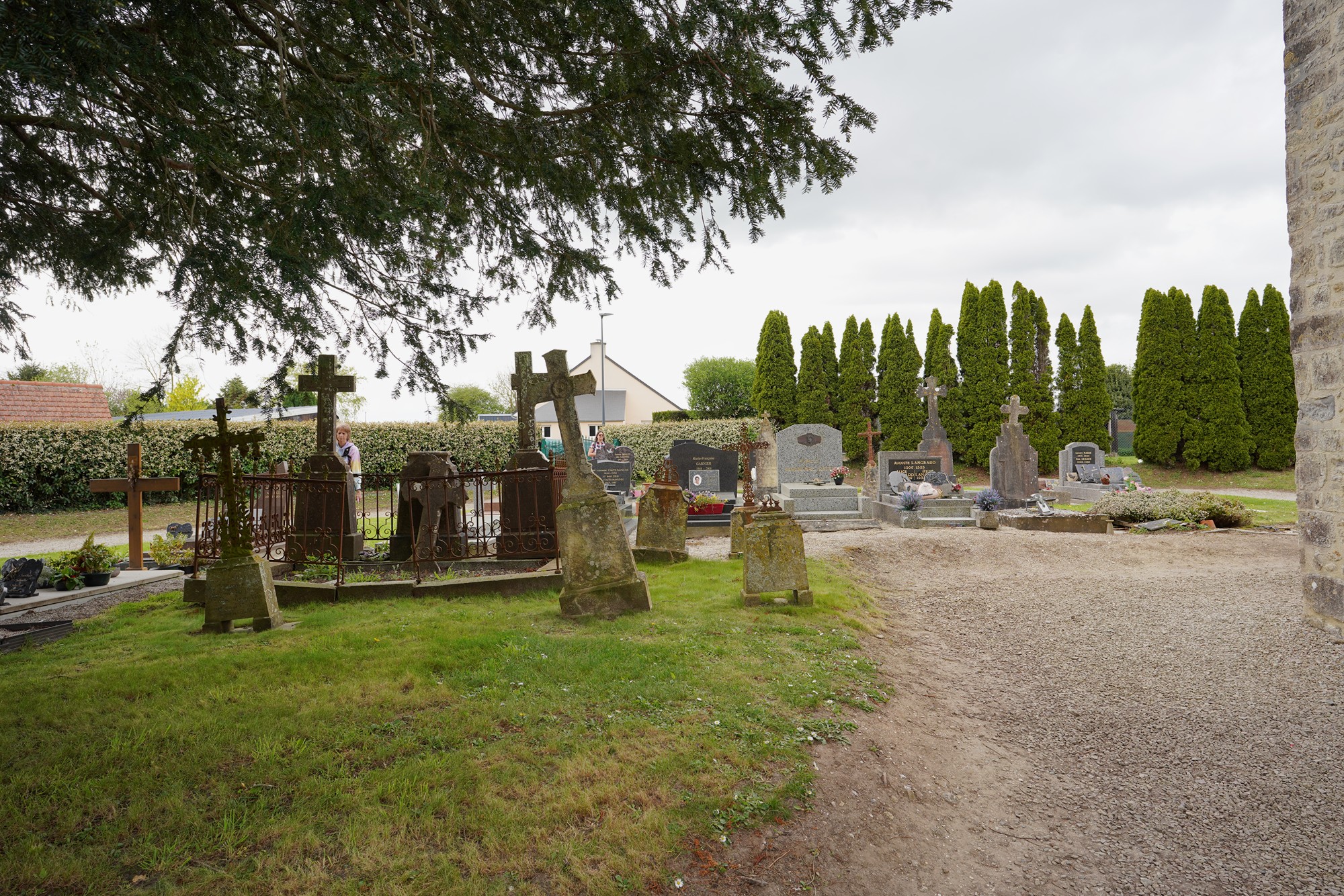
Wright and Moore’s actions at Angoville-au-Plain became legendary. Their bravery and dedication exemplify the selflessness of medics who risked their lives to save others. The church of Angoville-au-Plain now has a stained-glass window depicting paratroopers, a tribute to the heroism displayed by Wright, Moore, and their comrades.
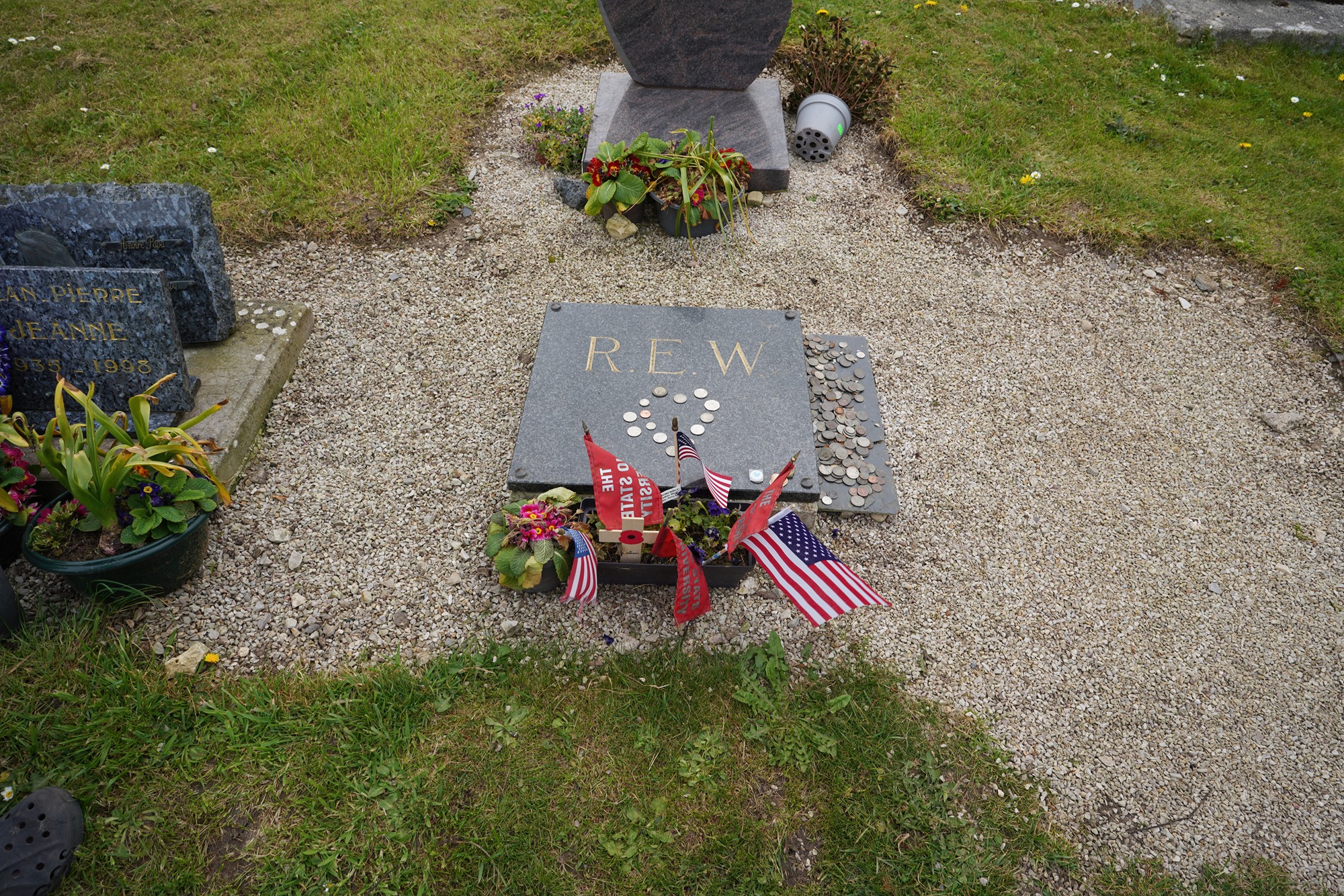
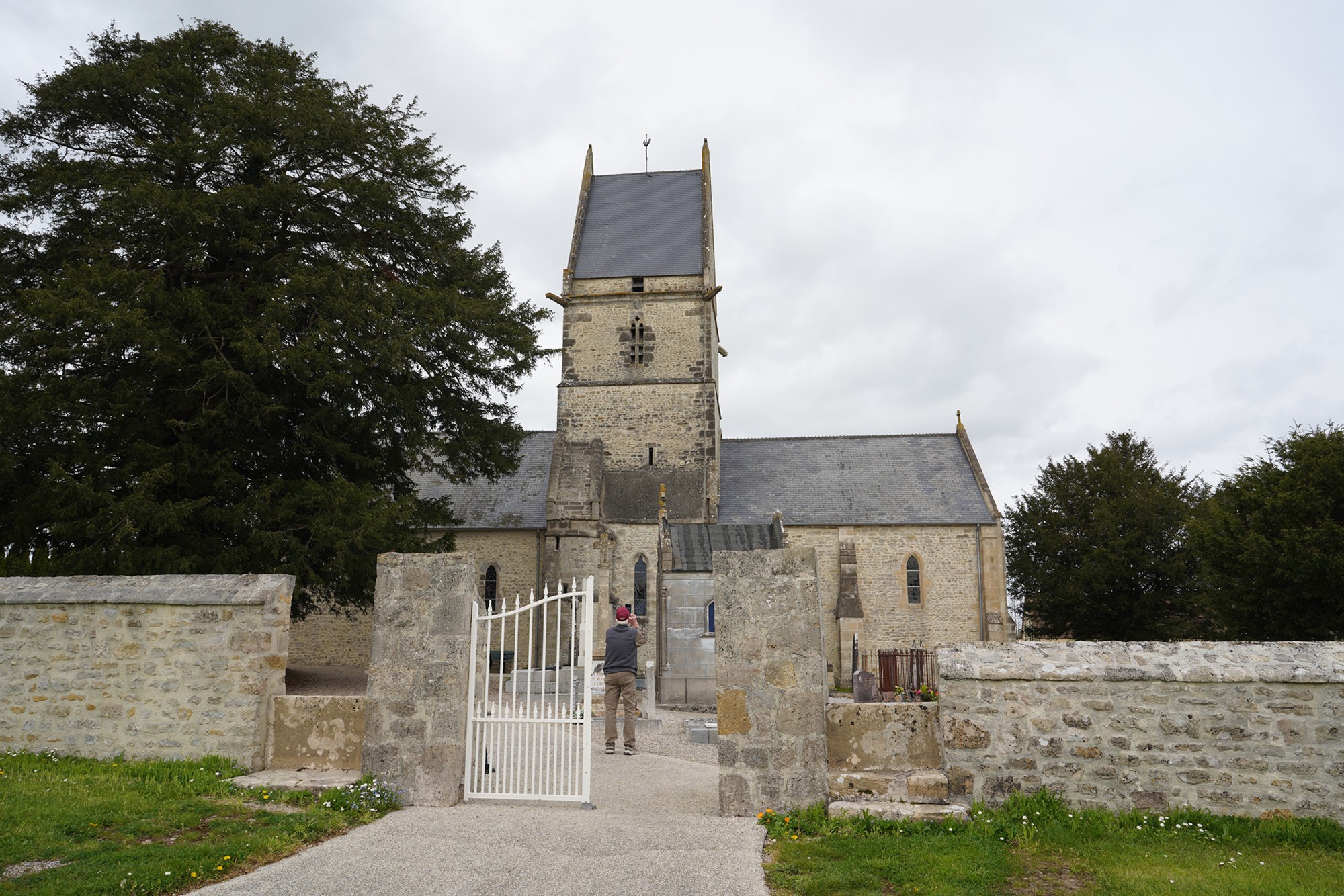
Came back to Bayeux Town after the tour











